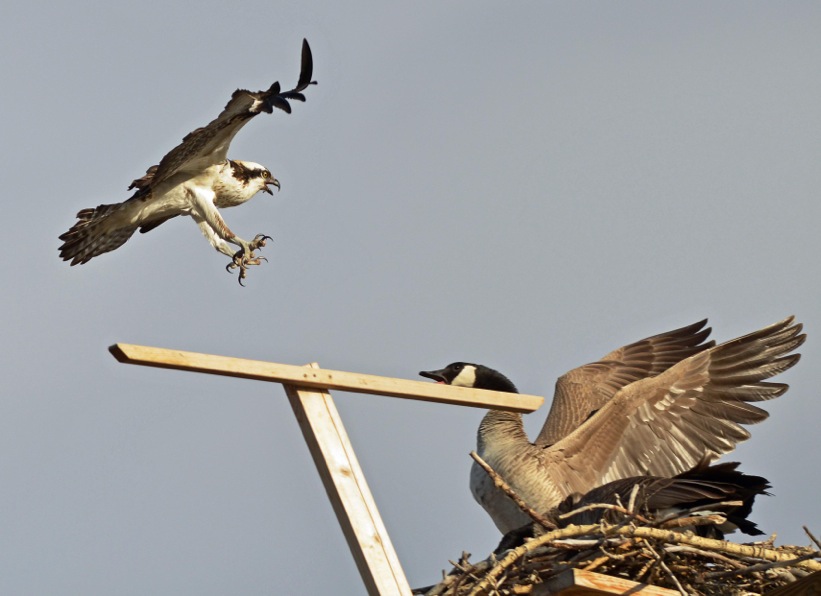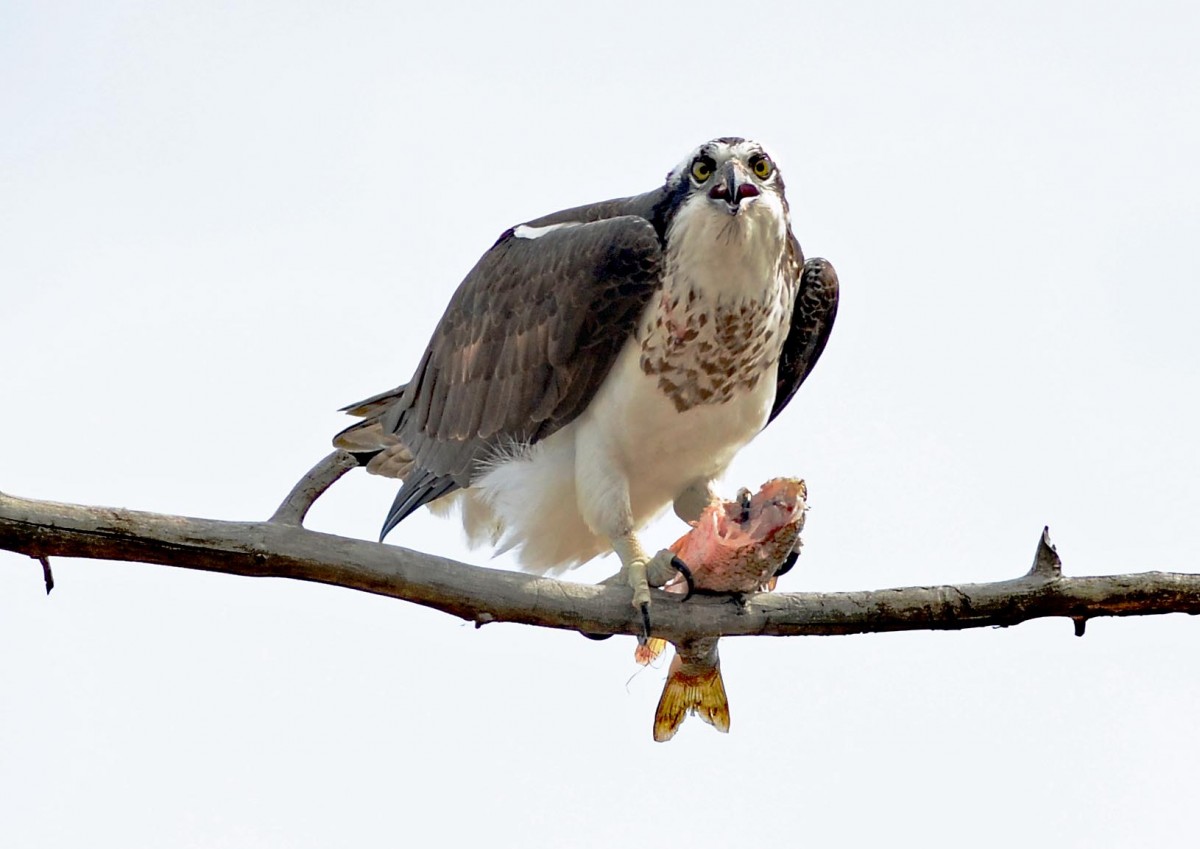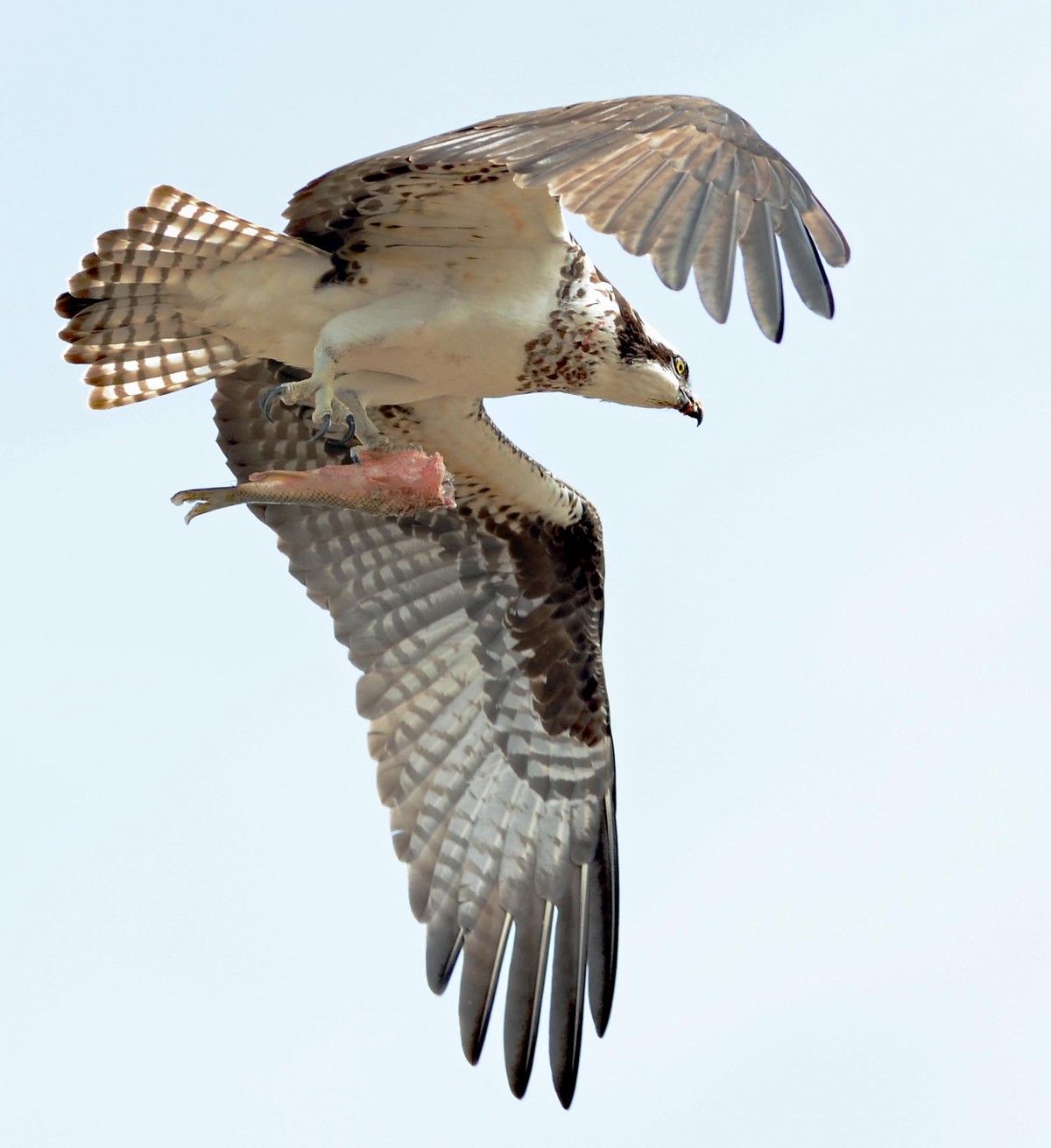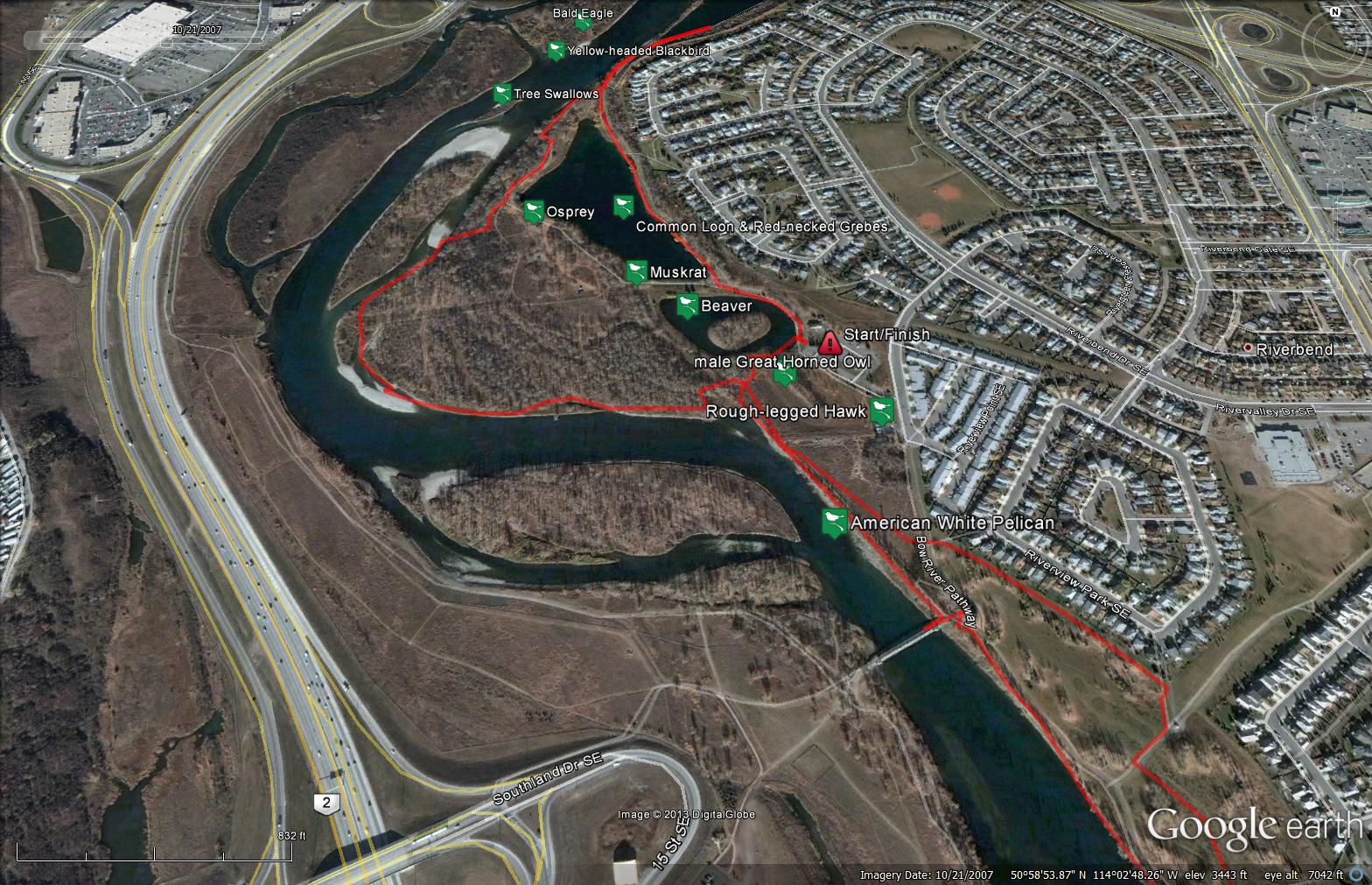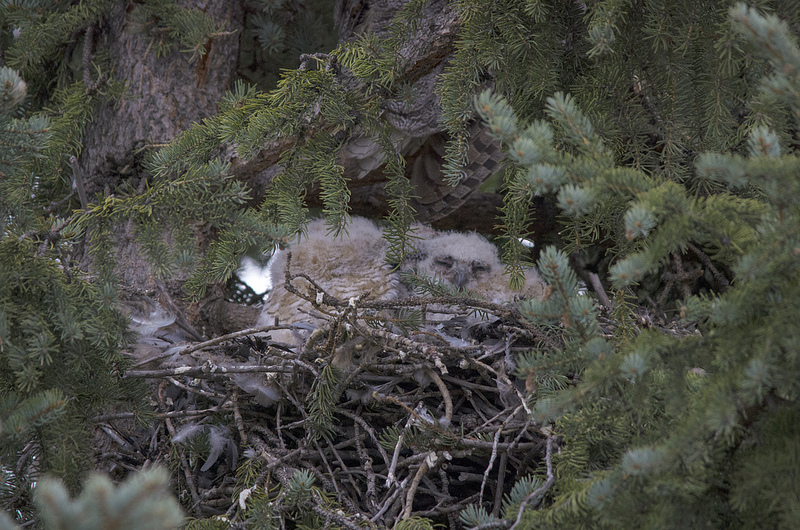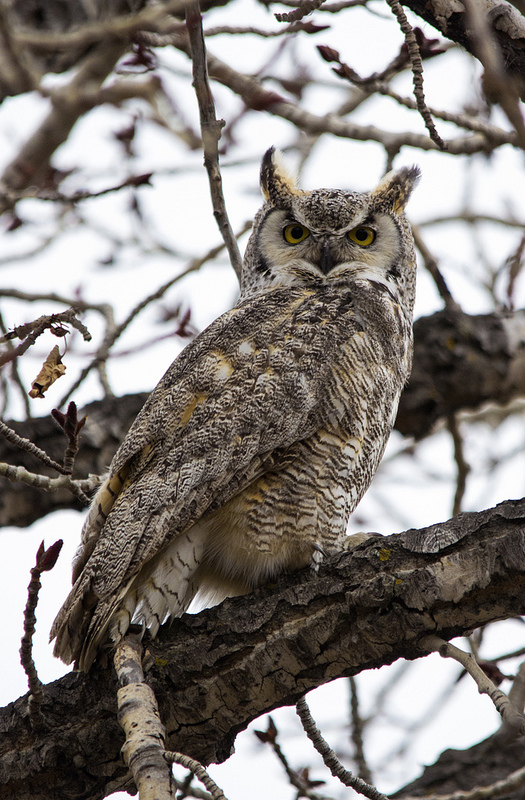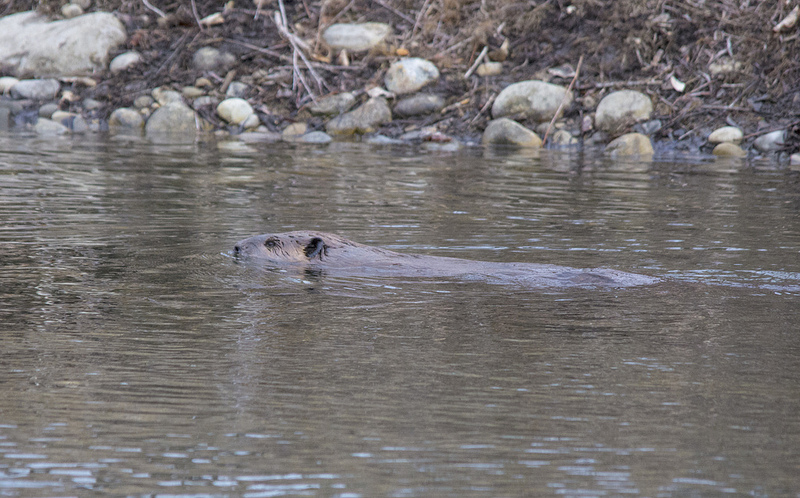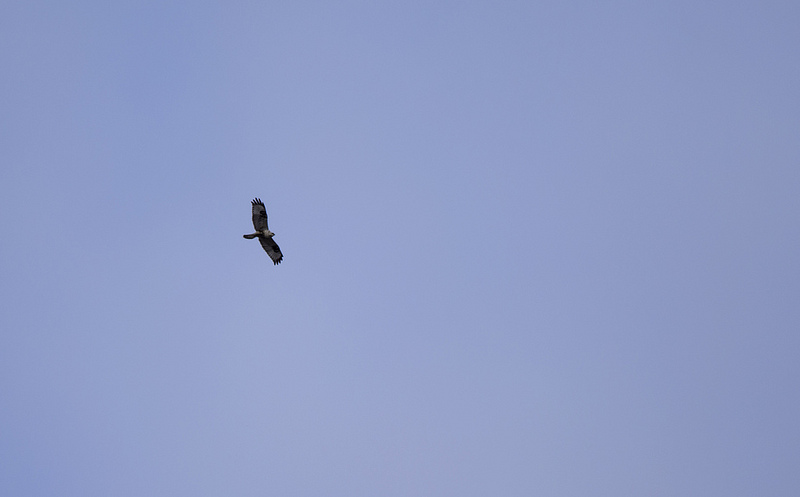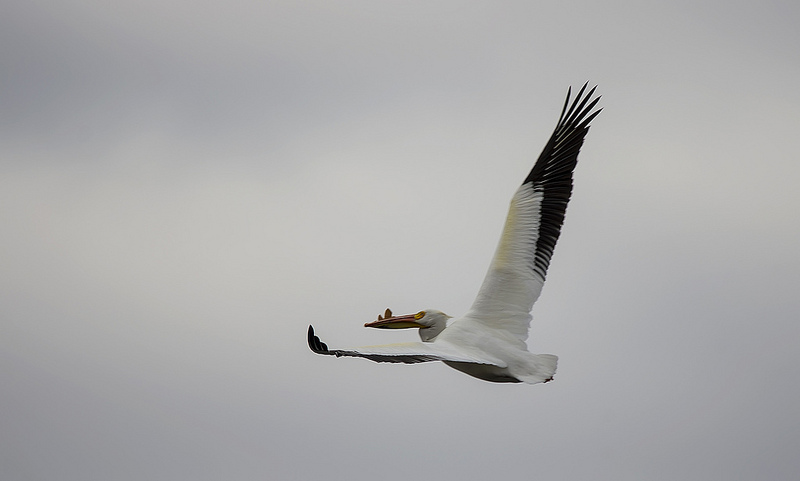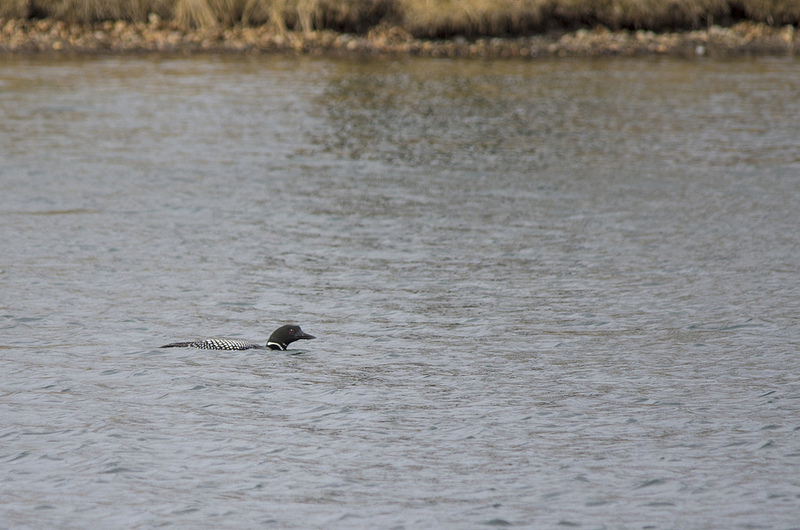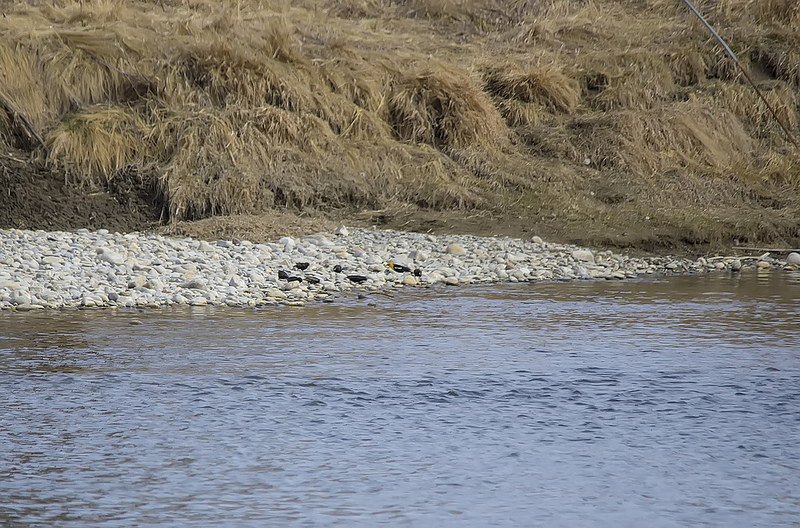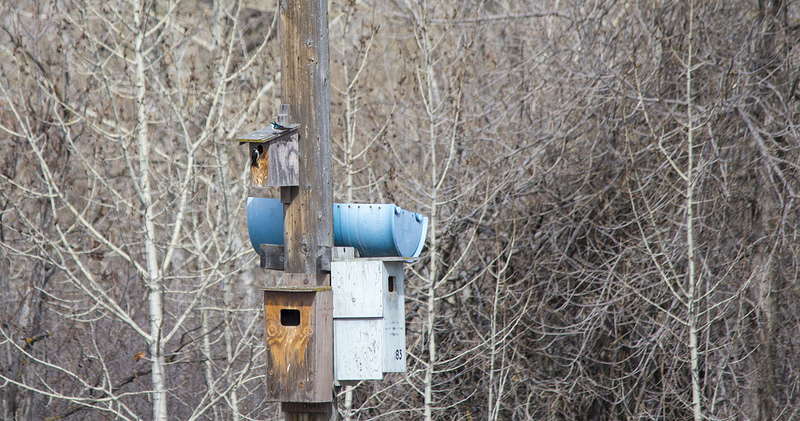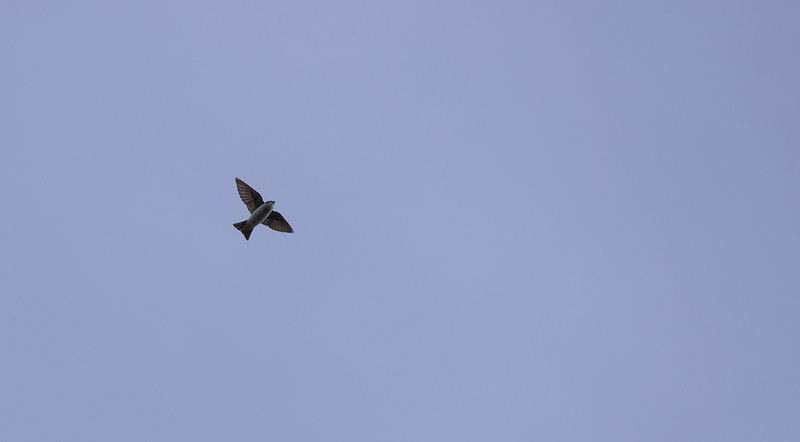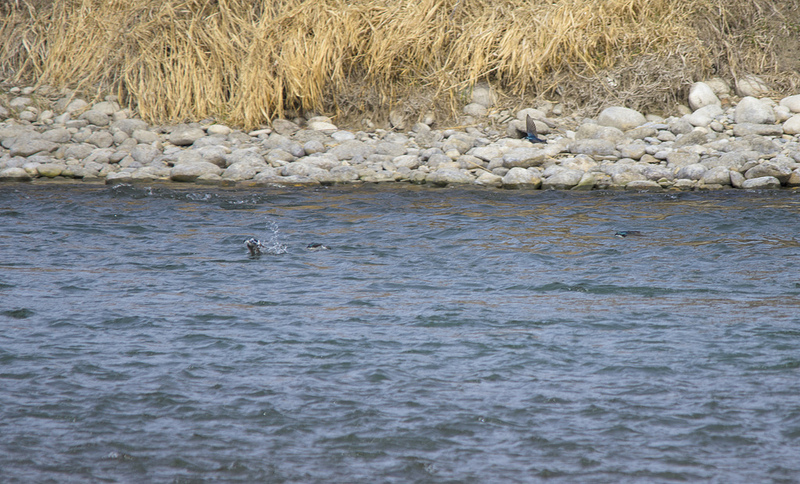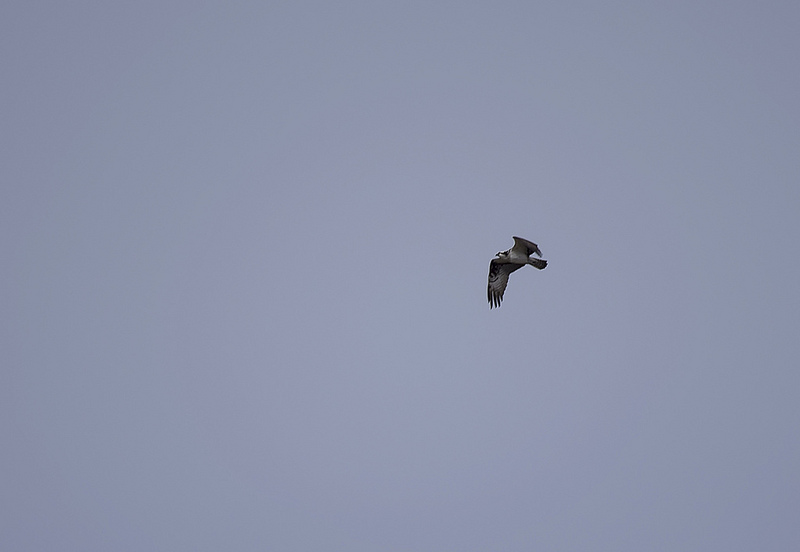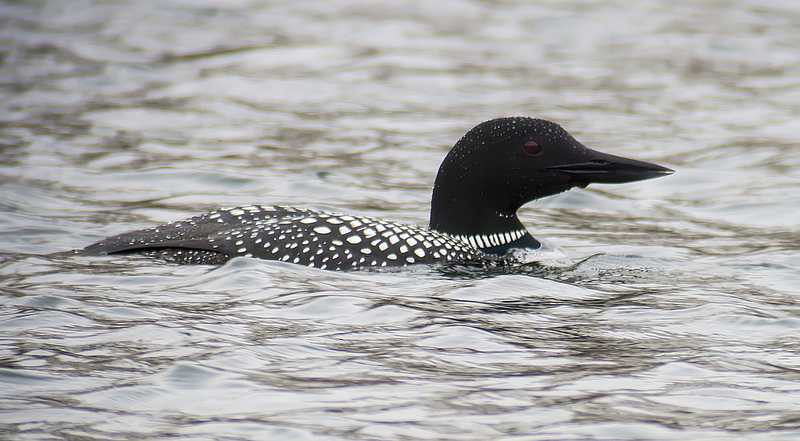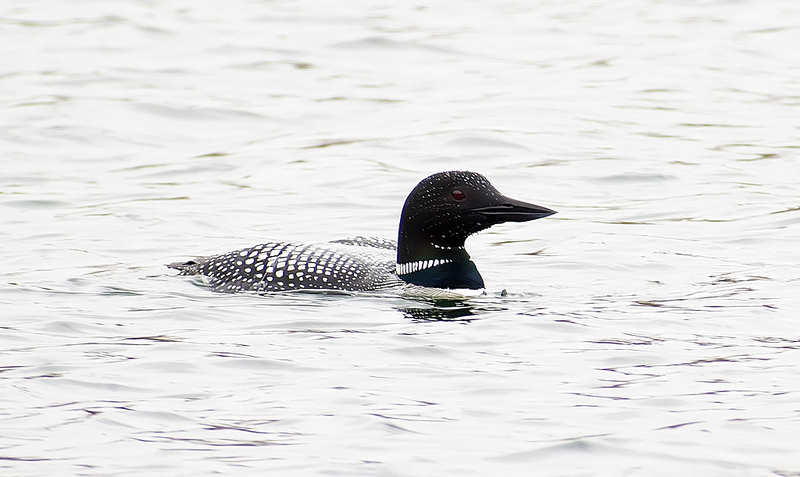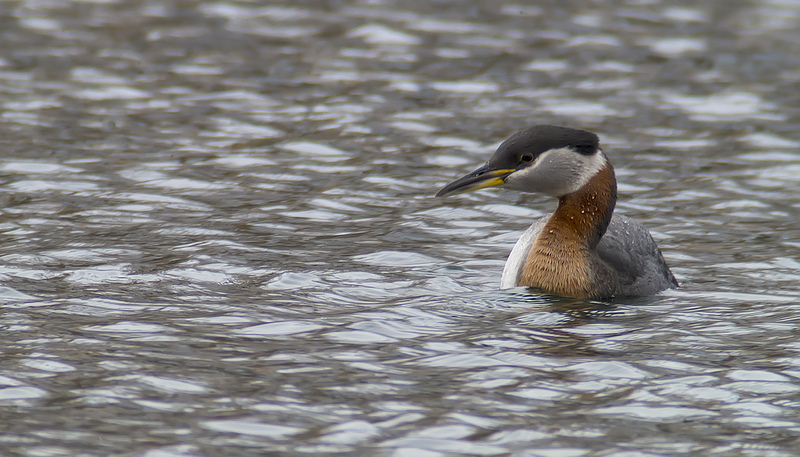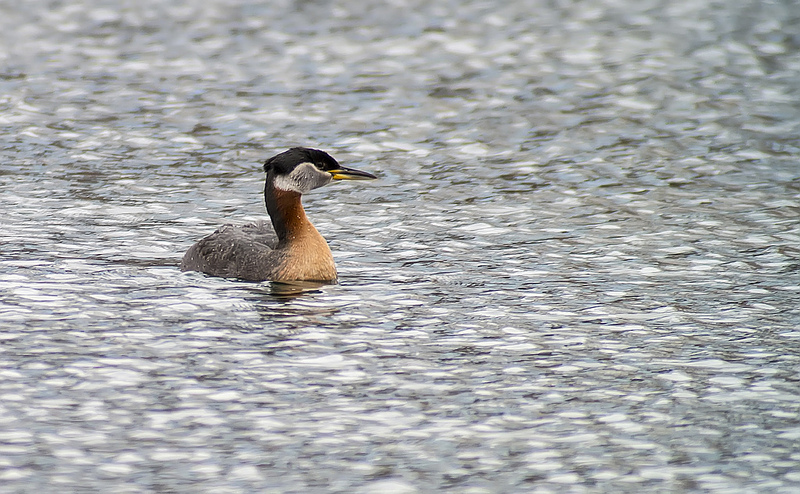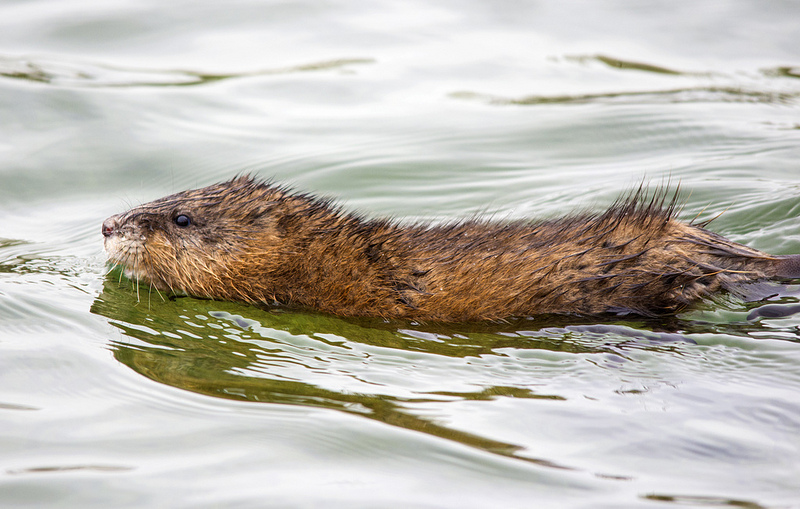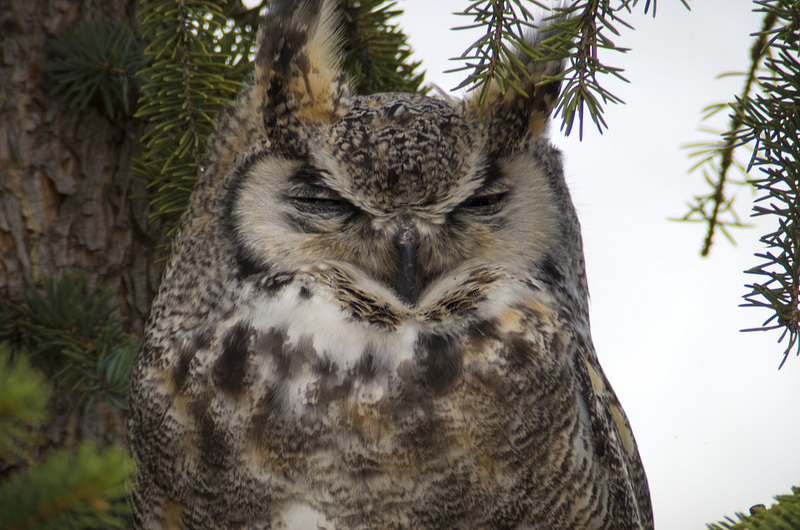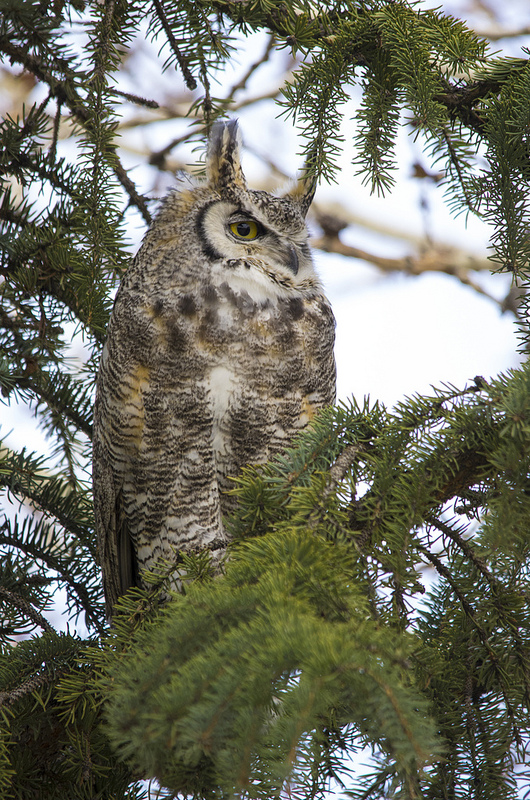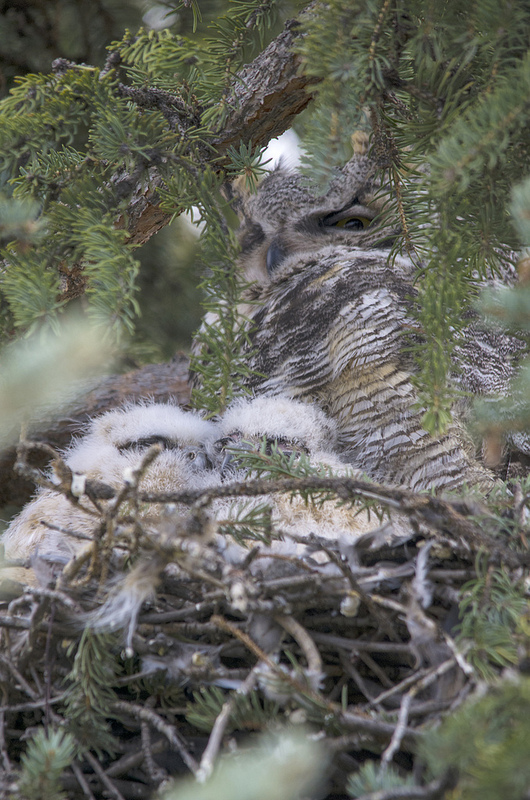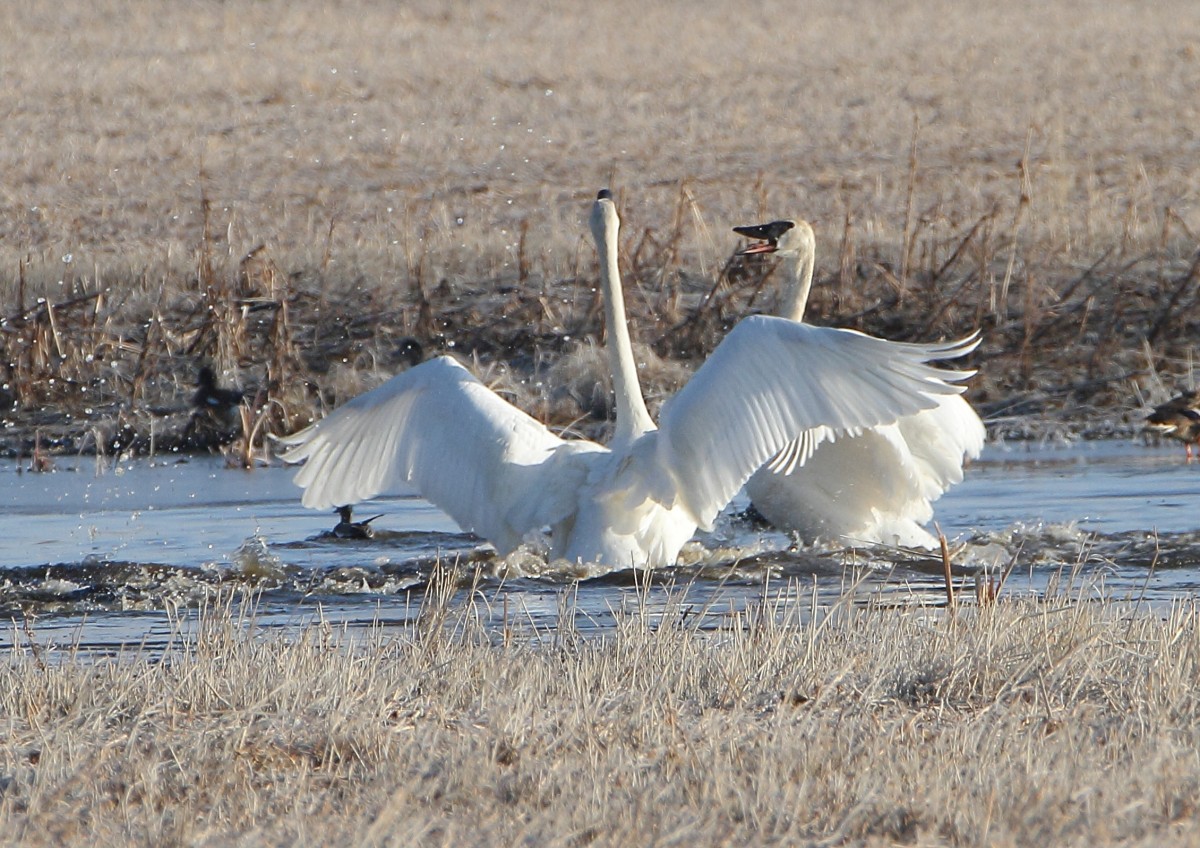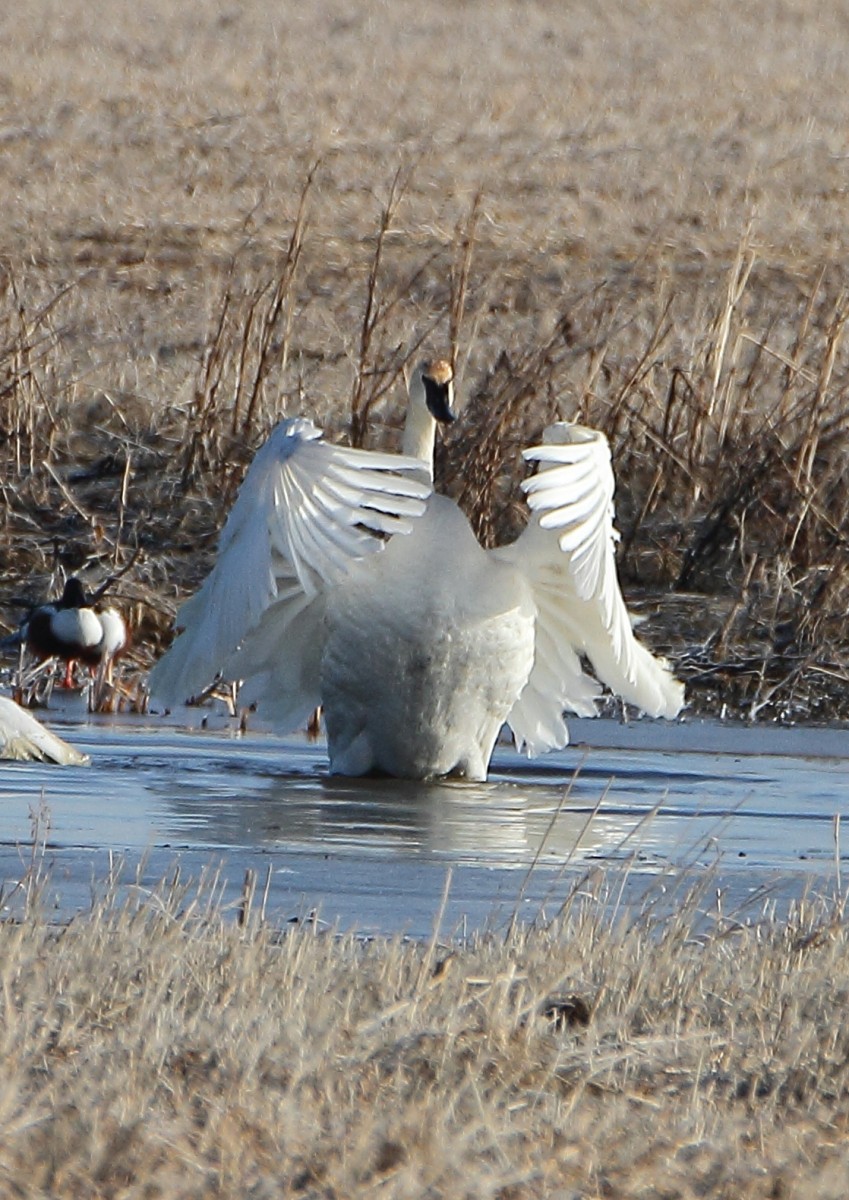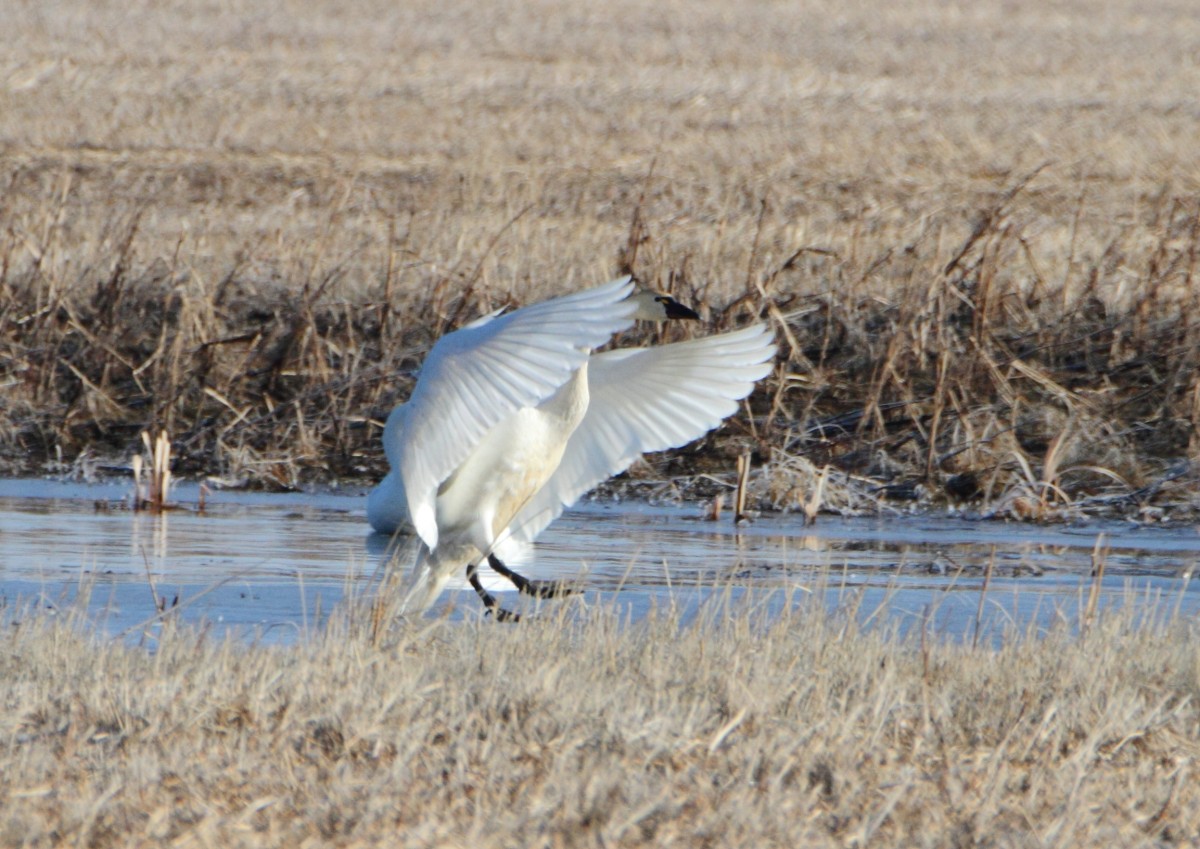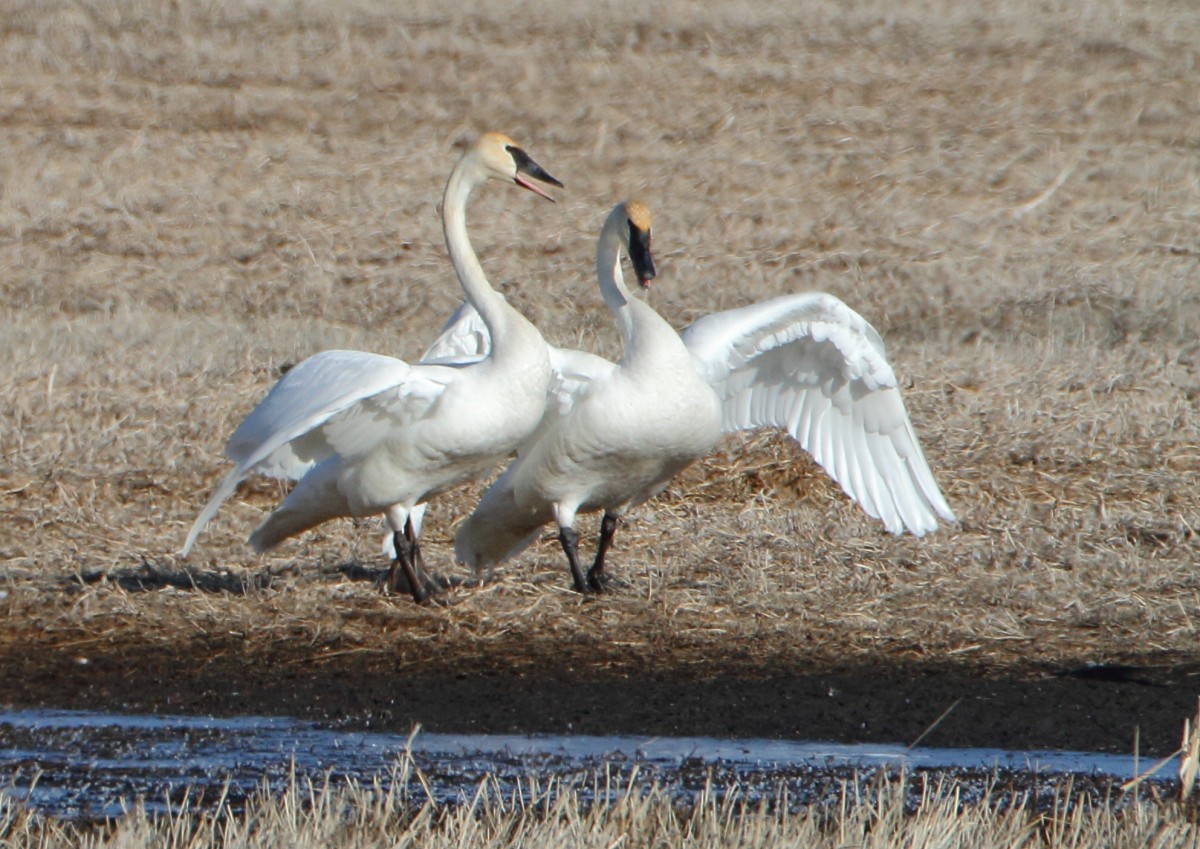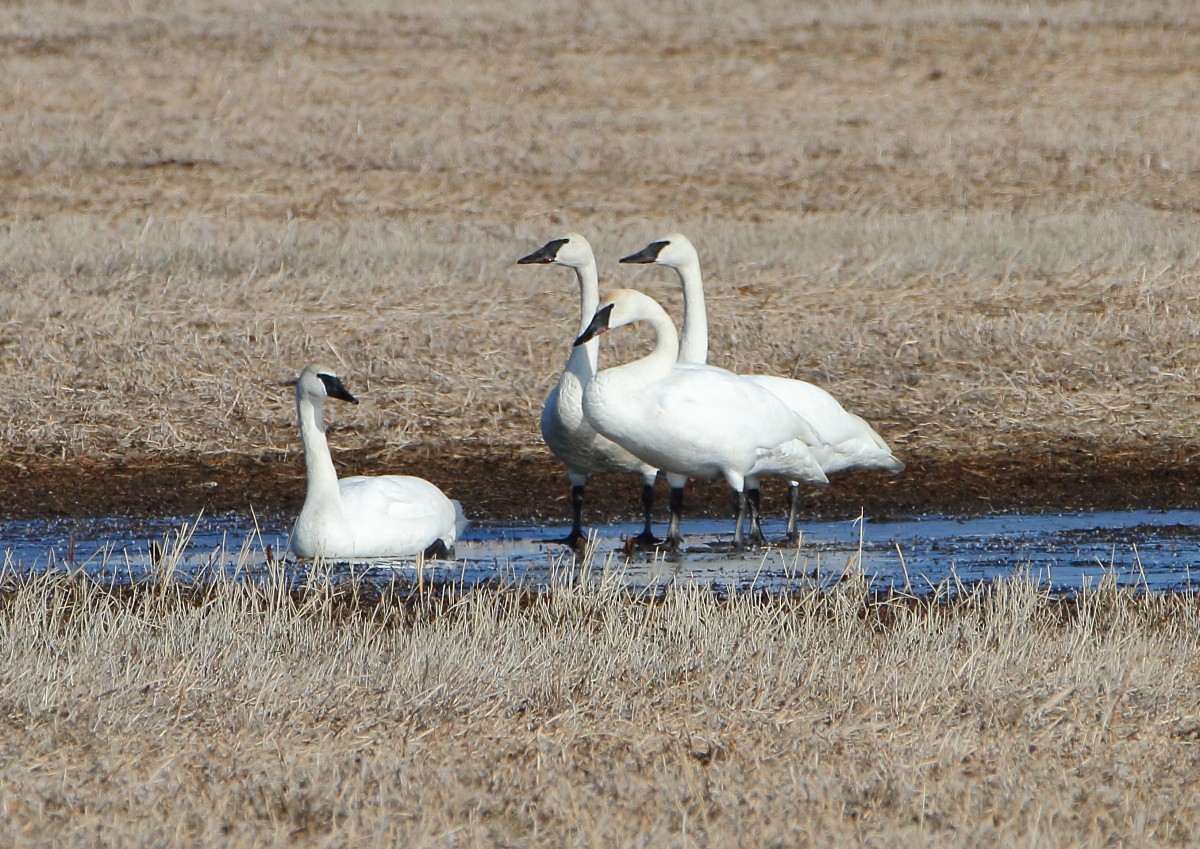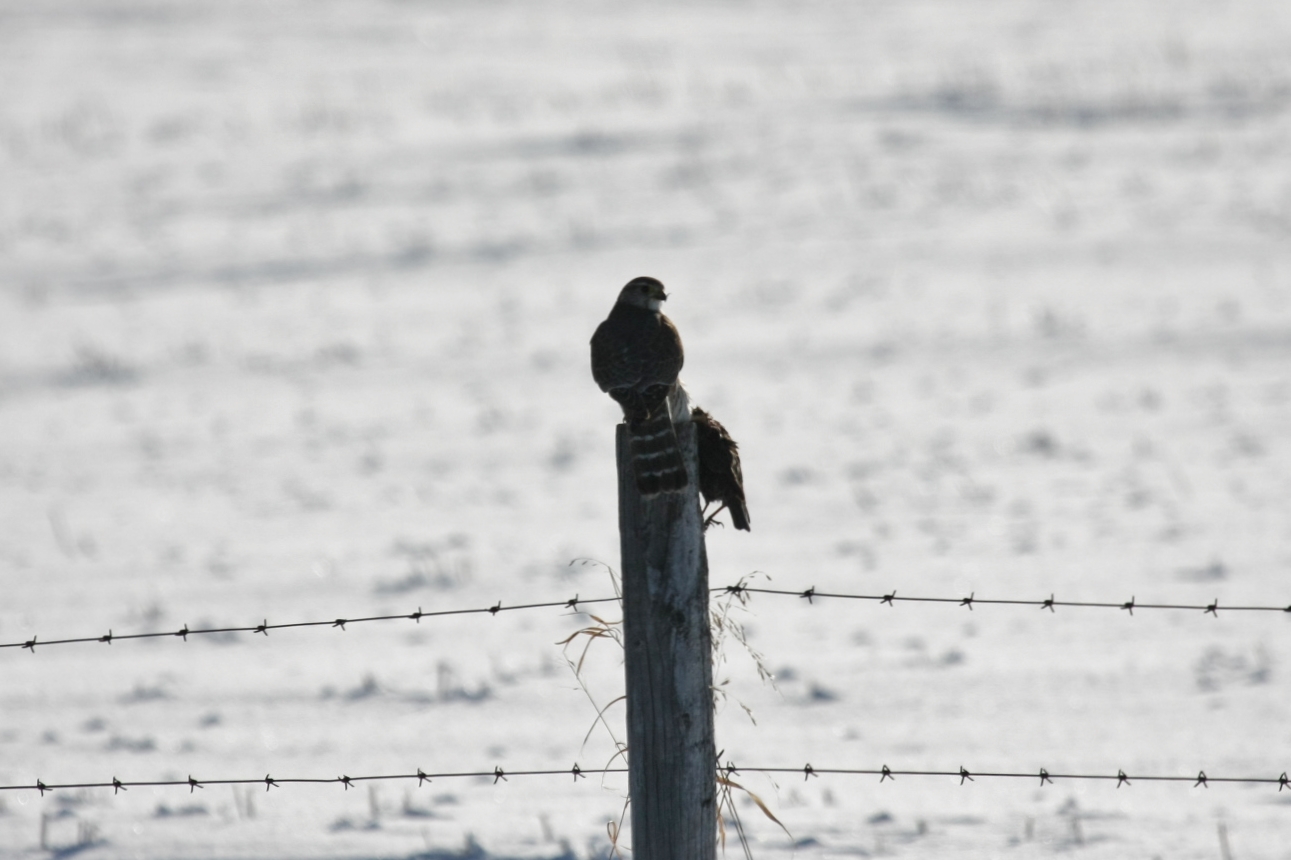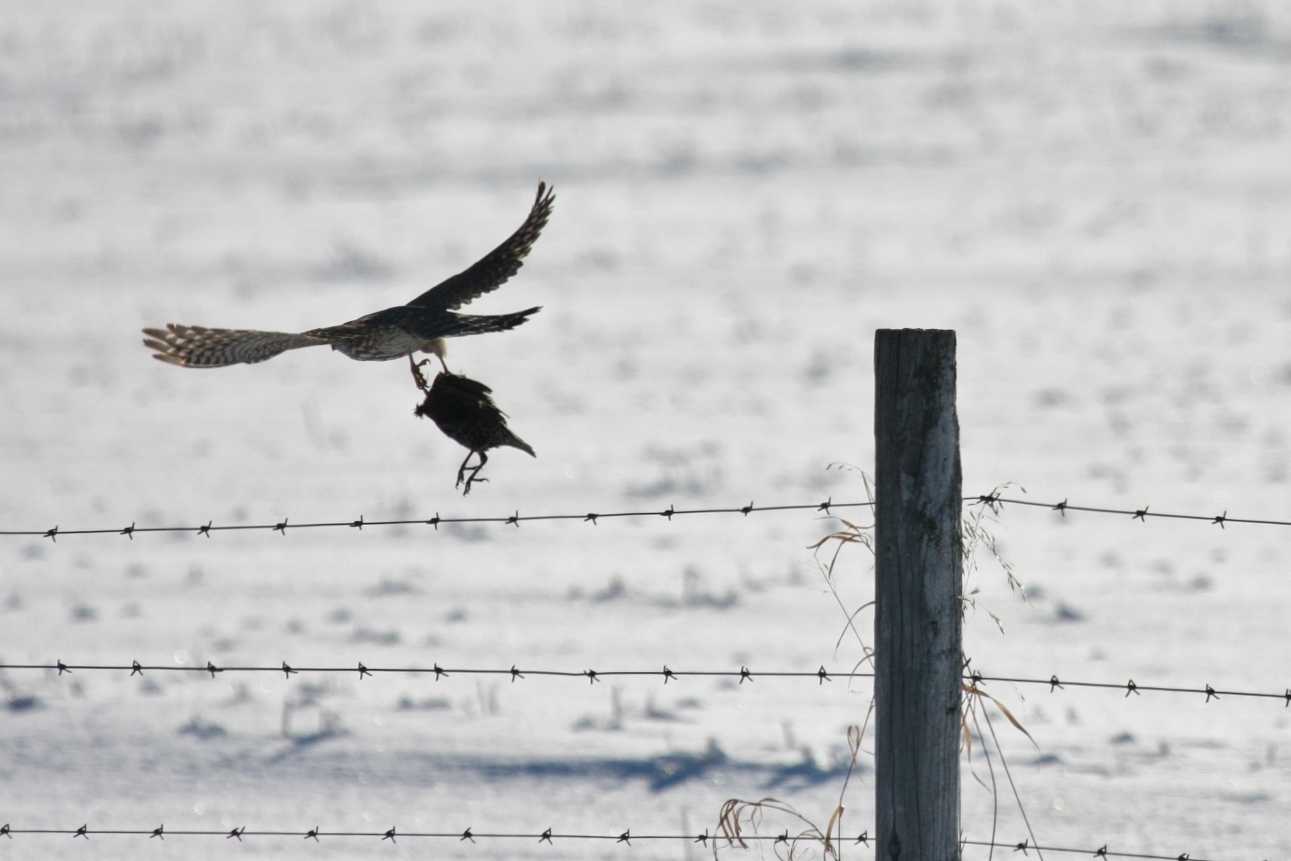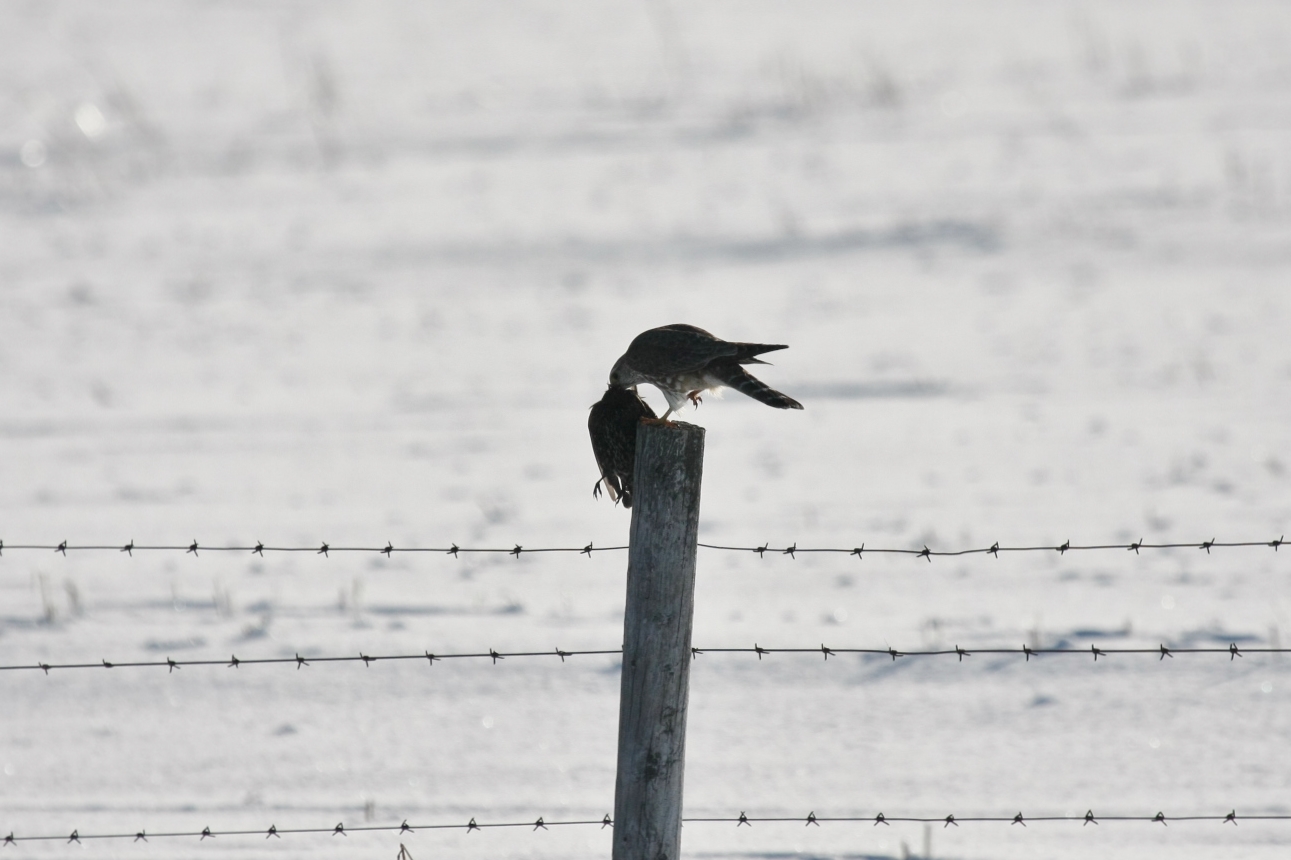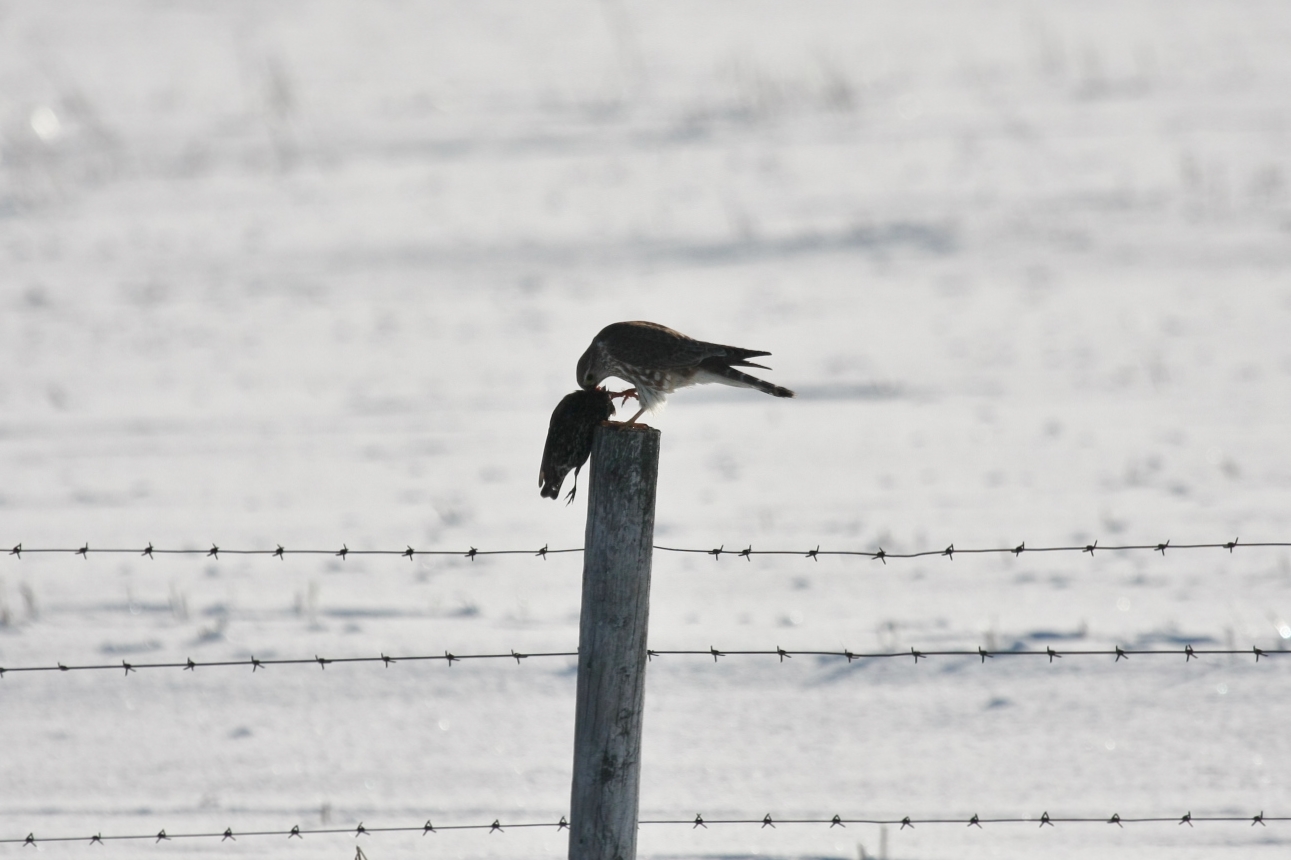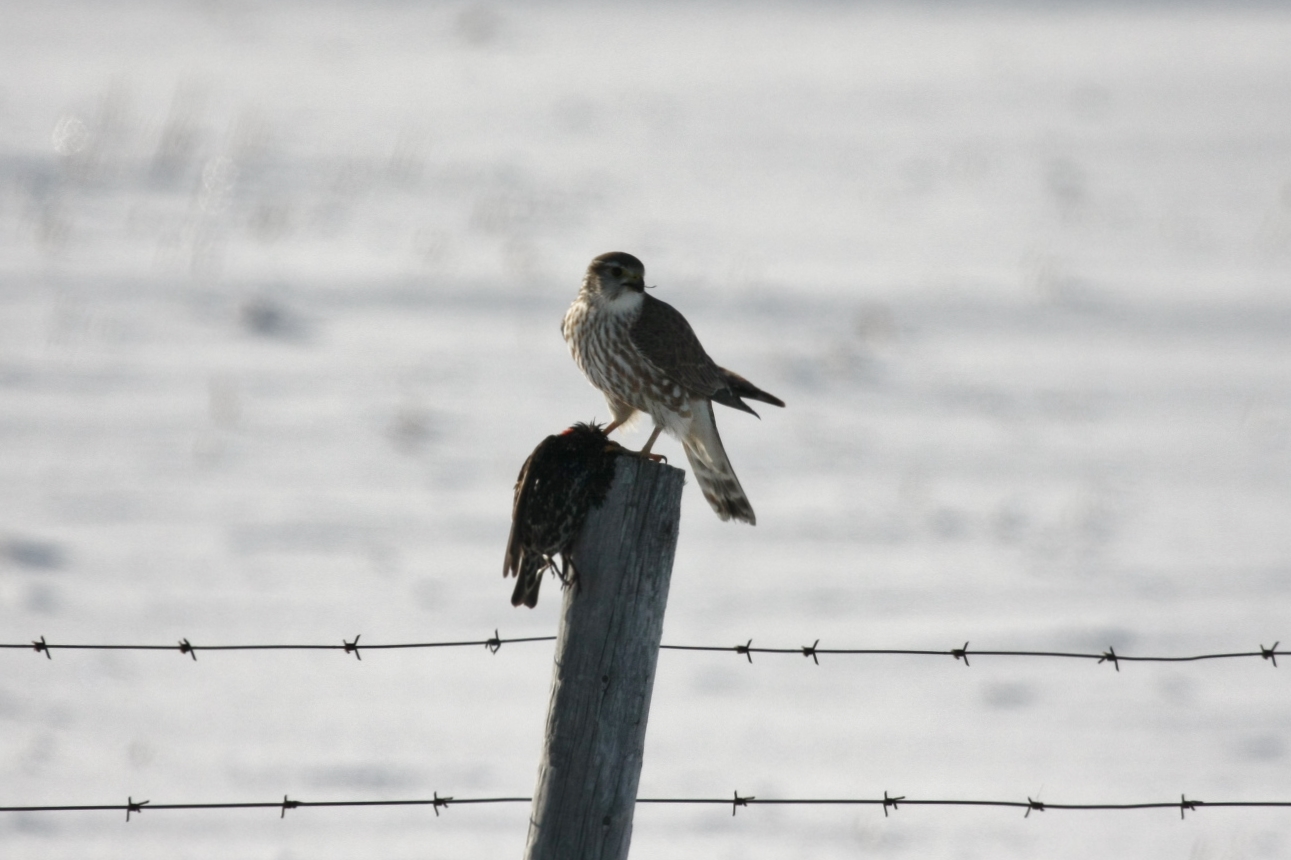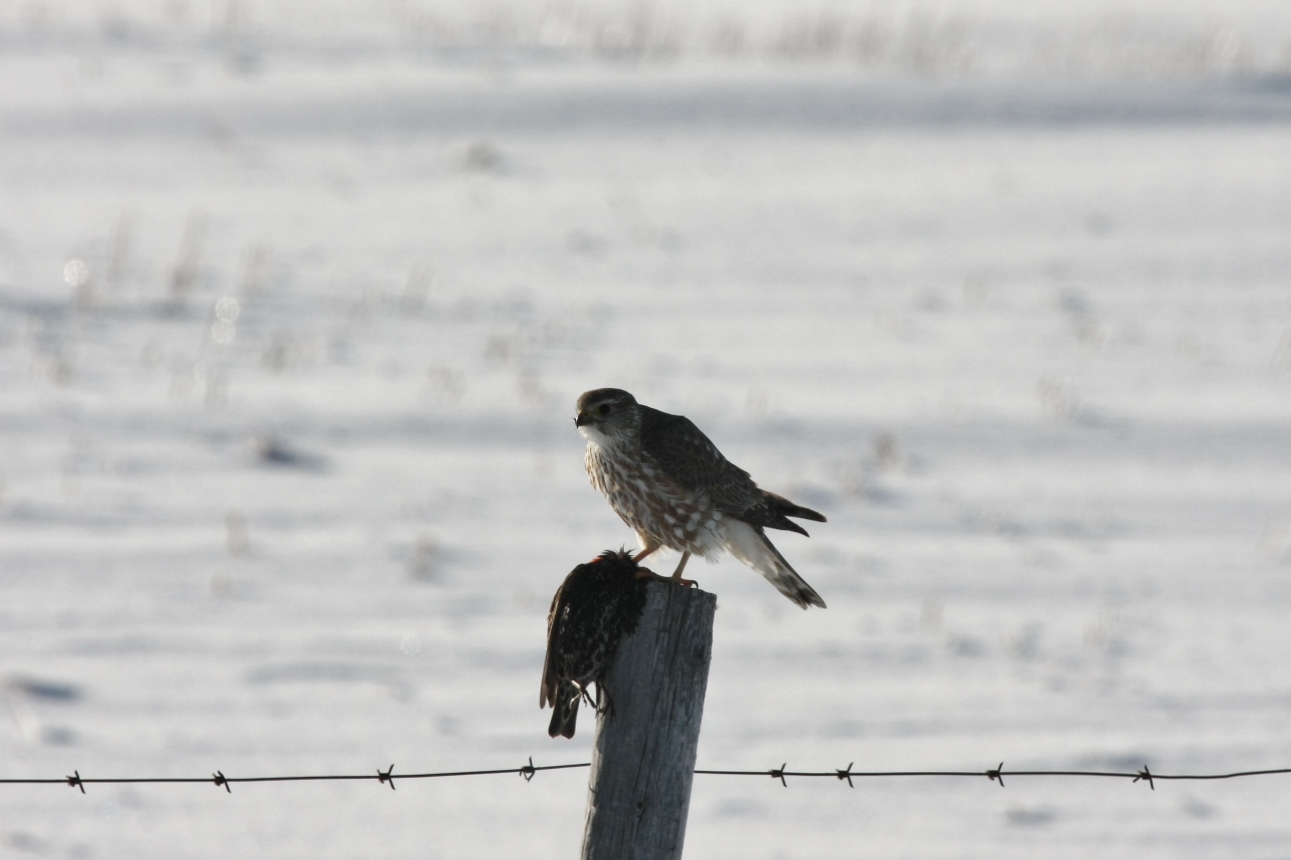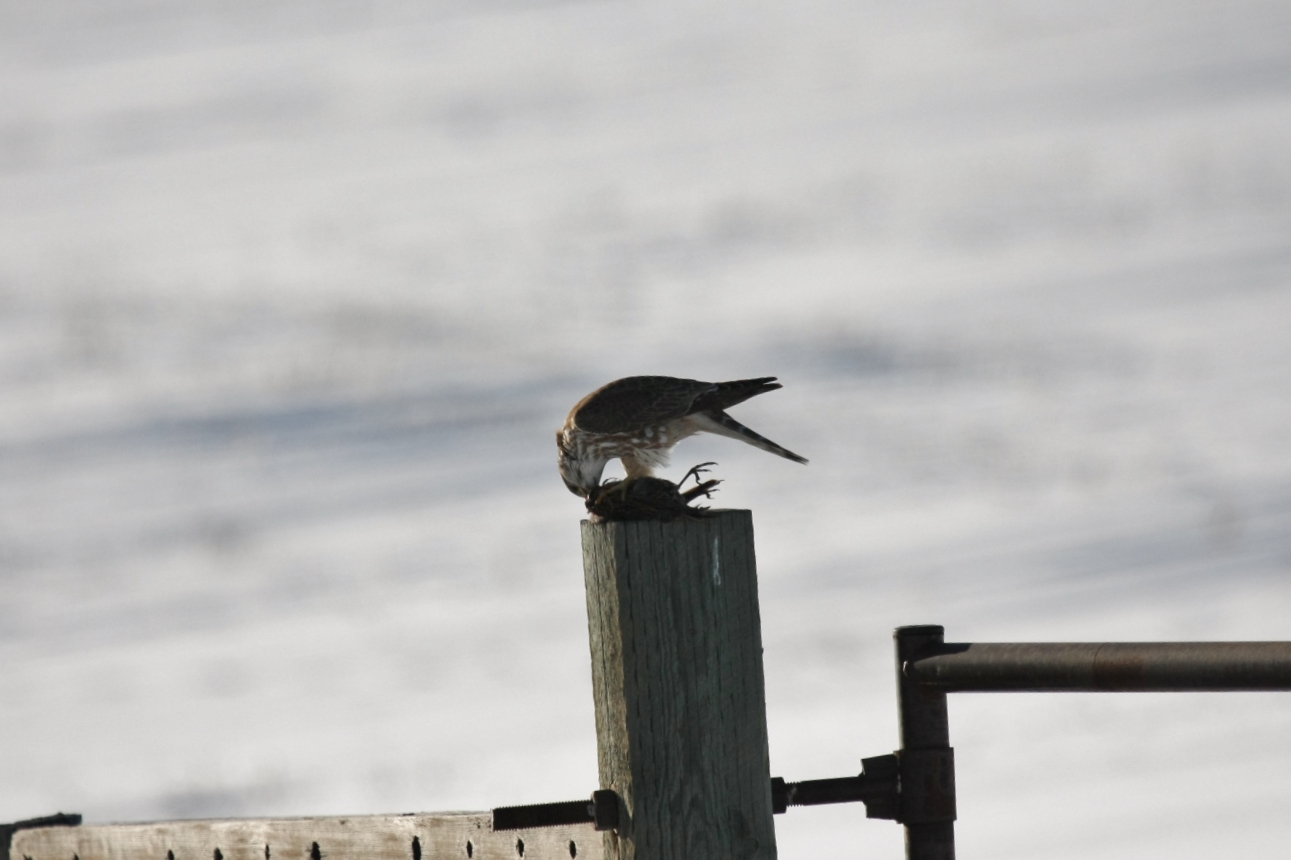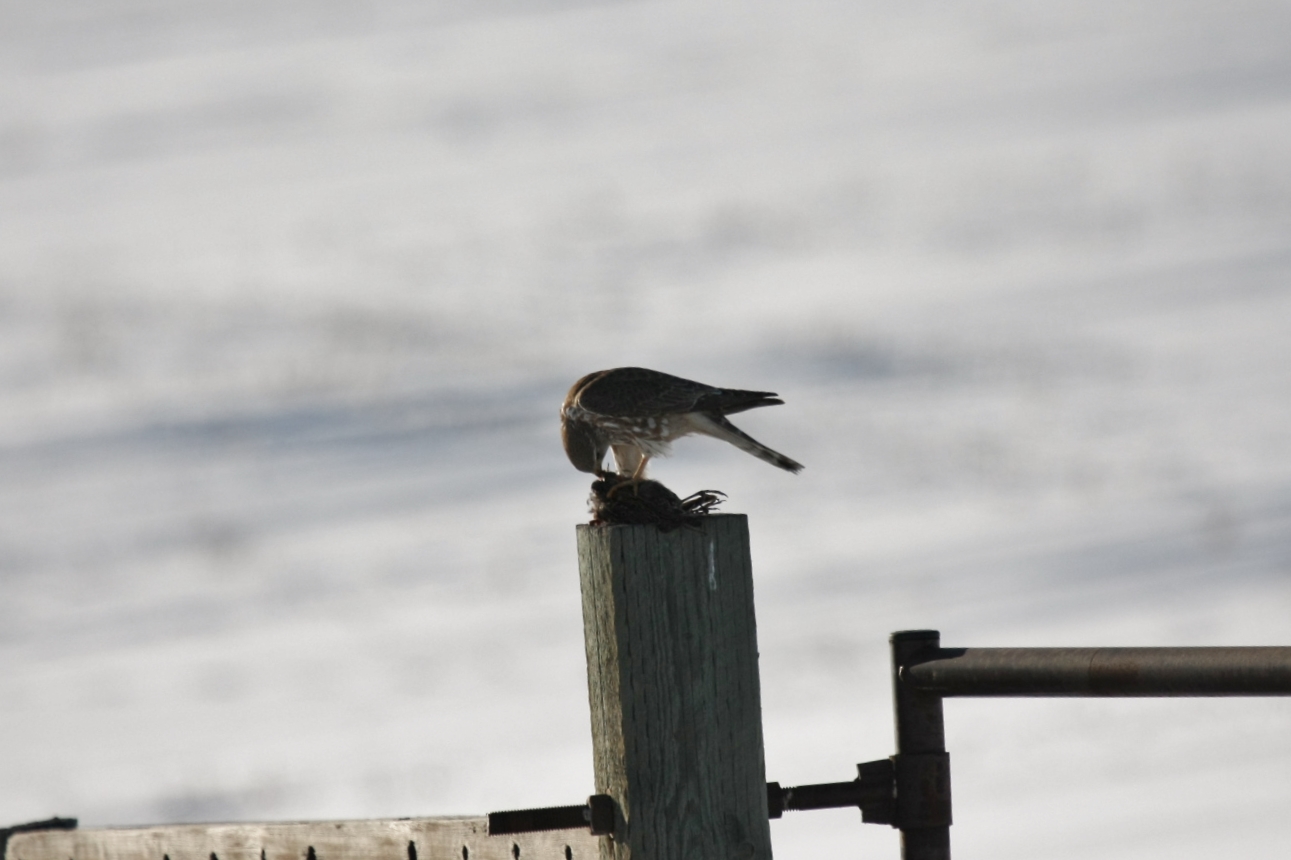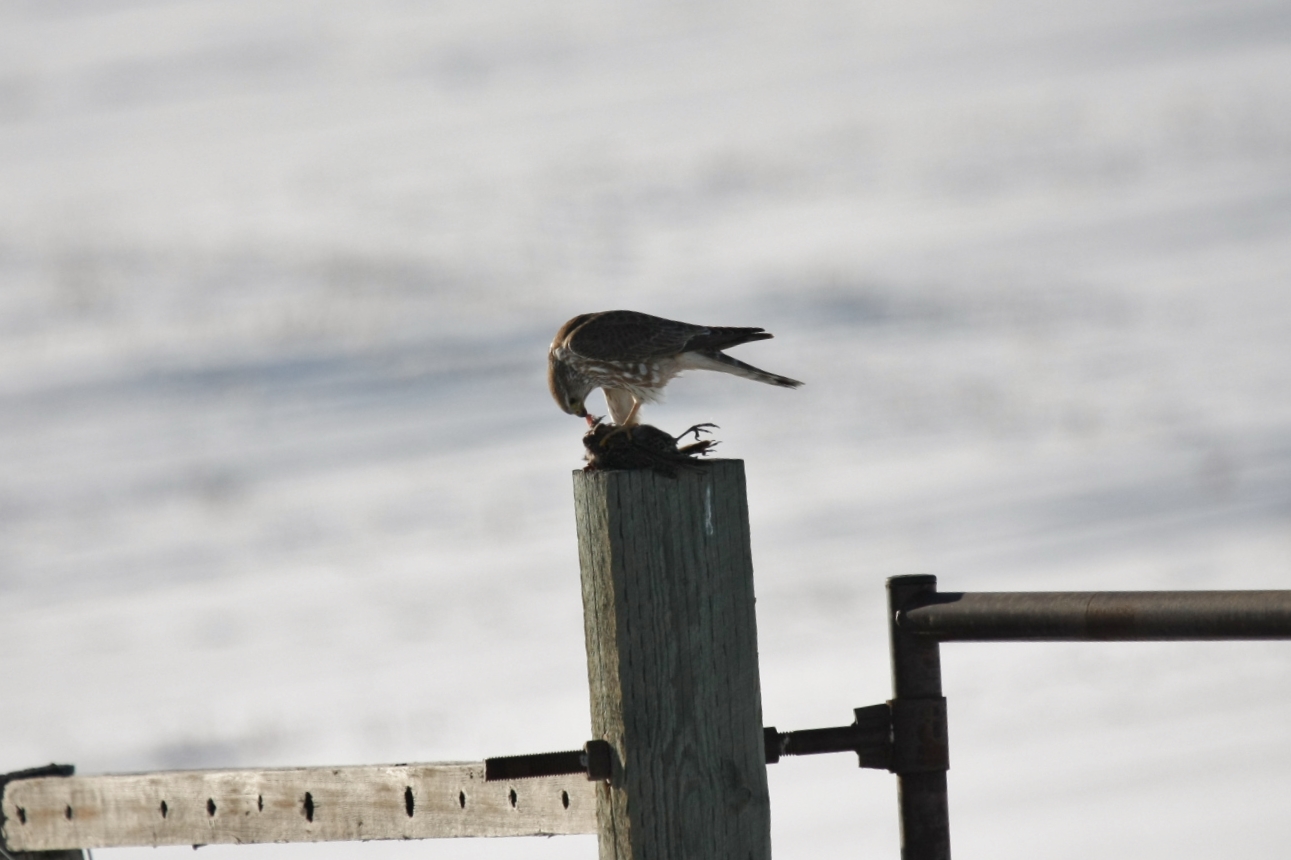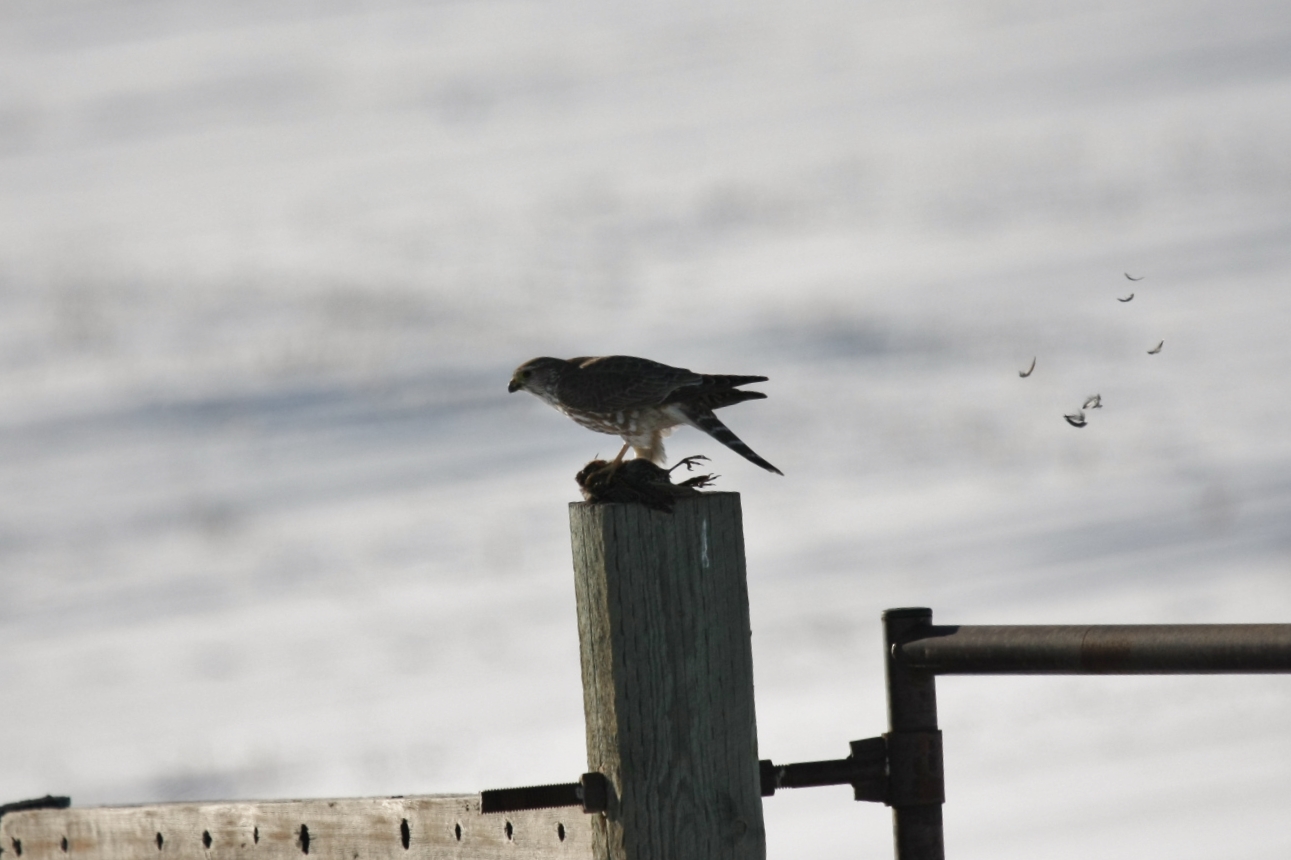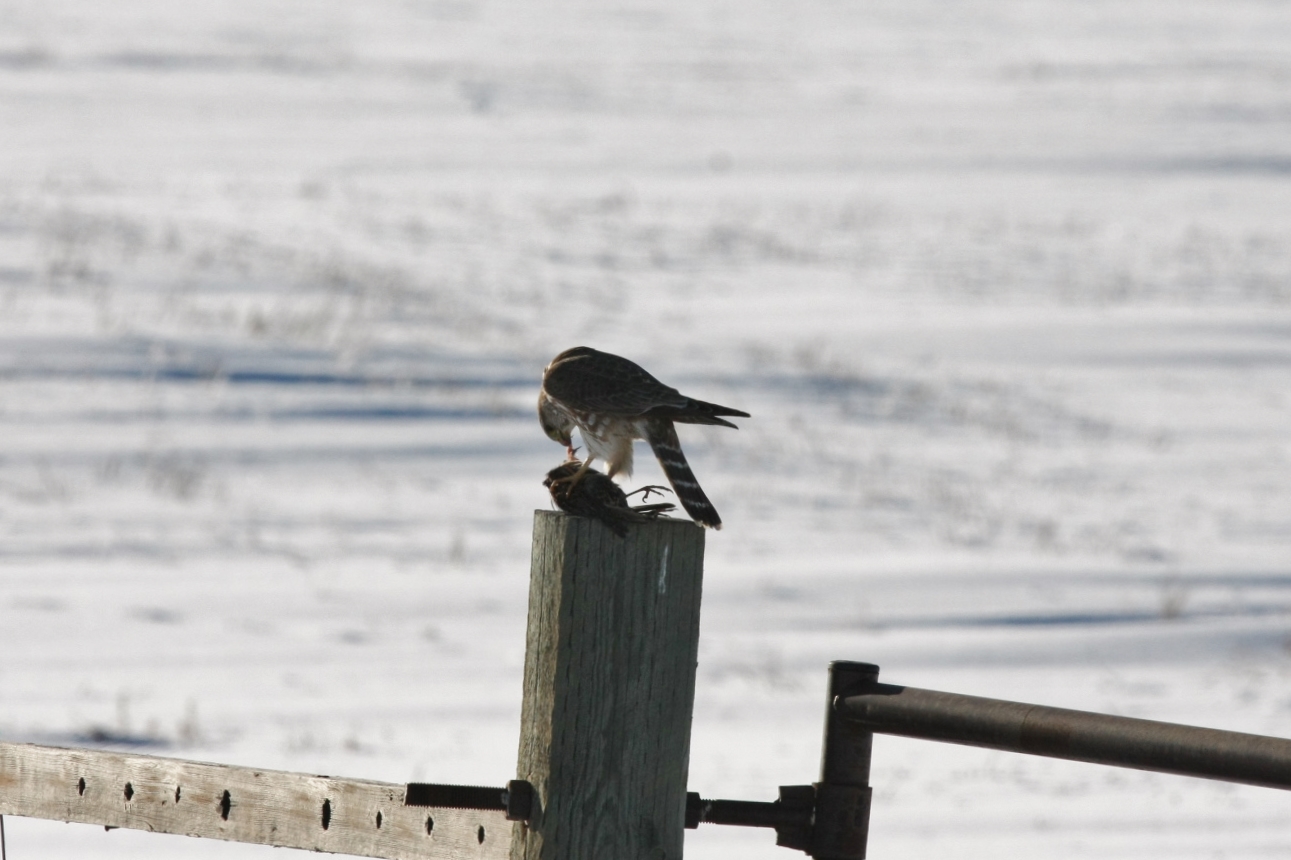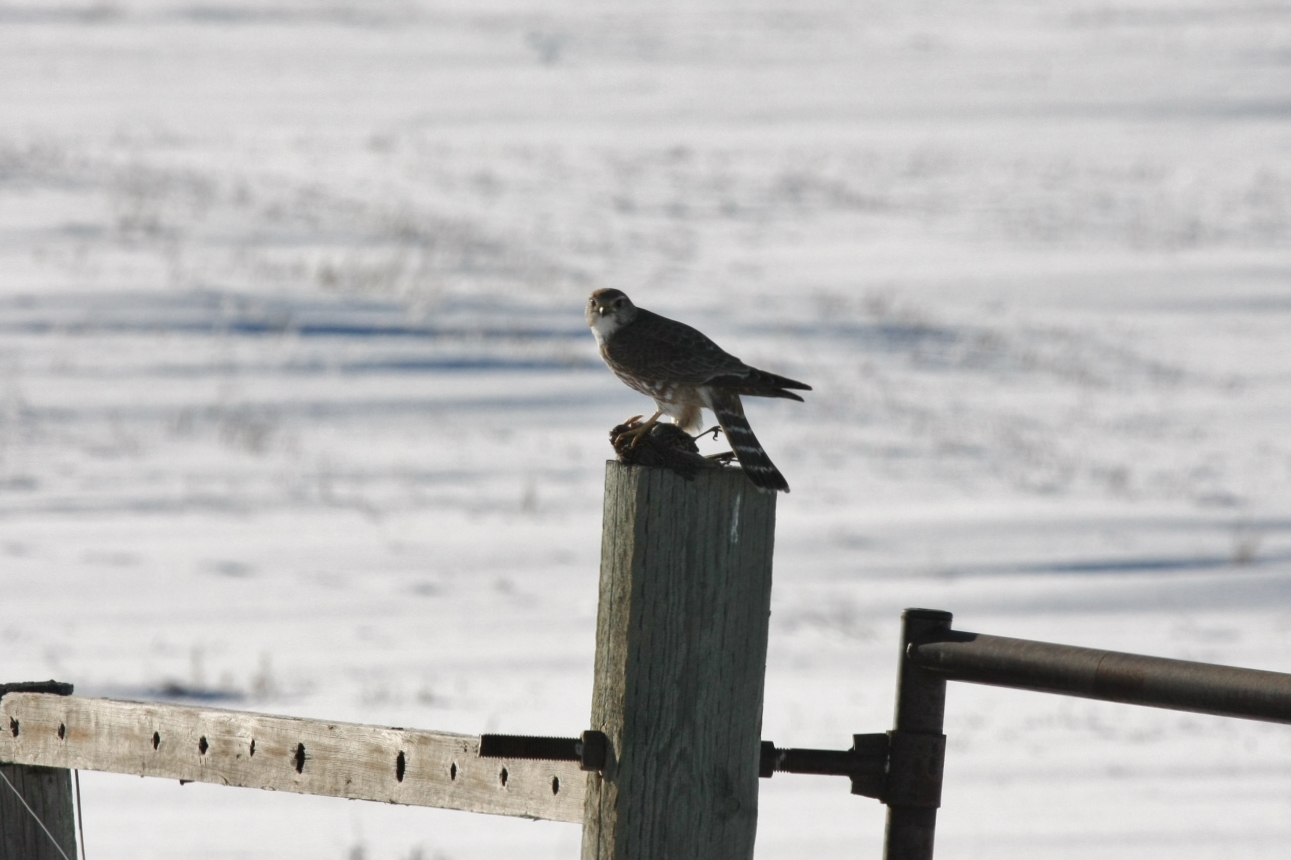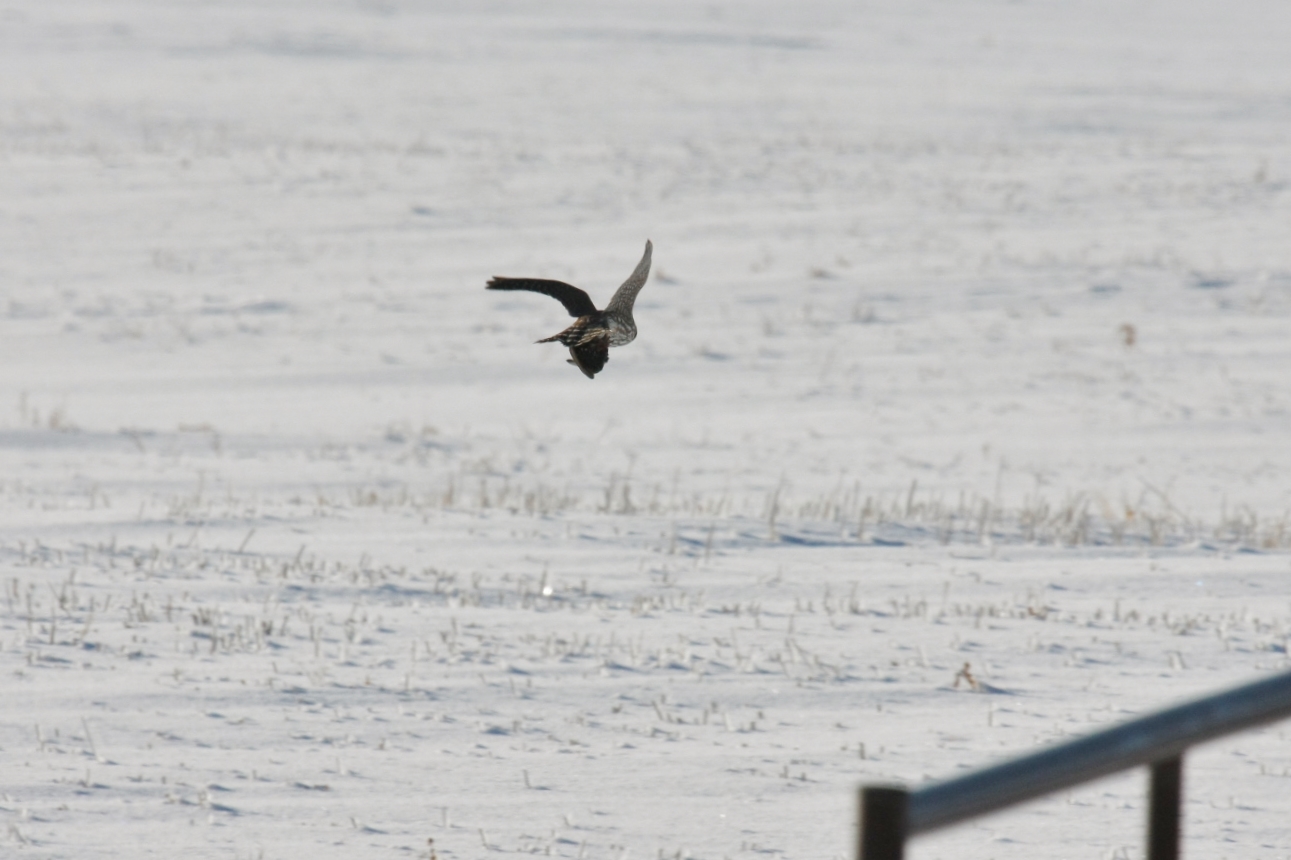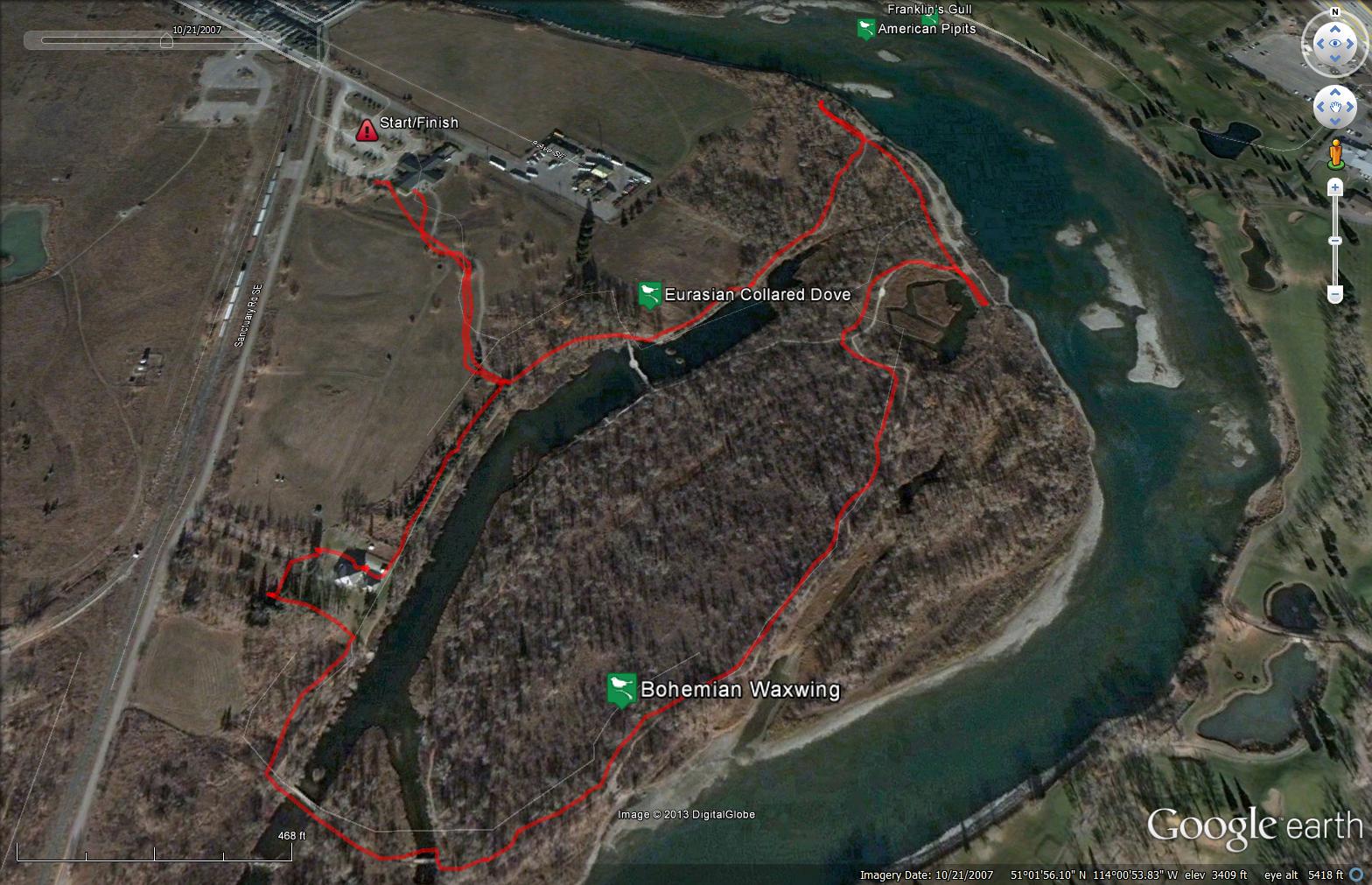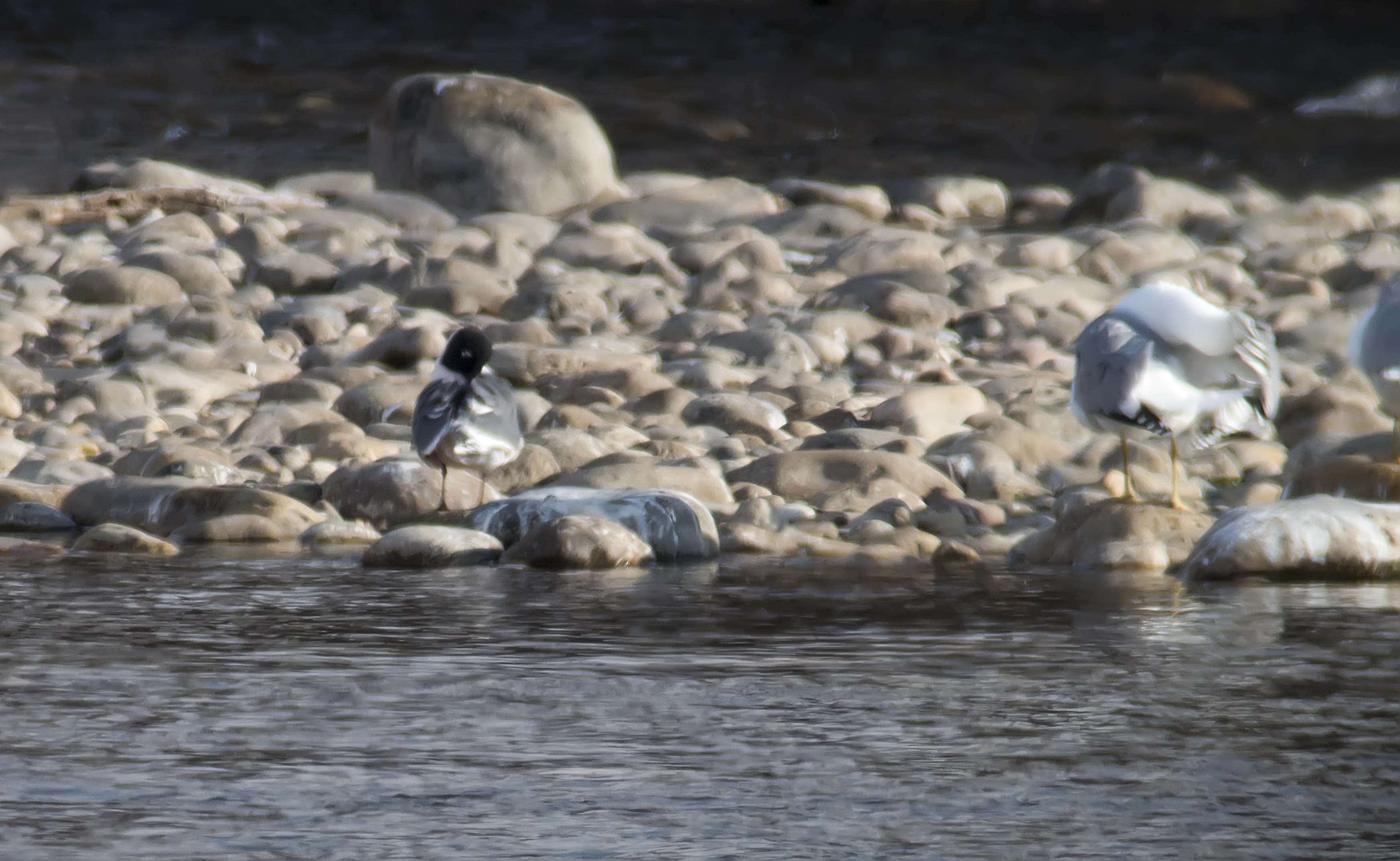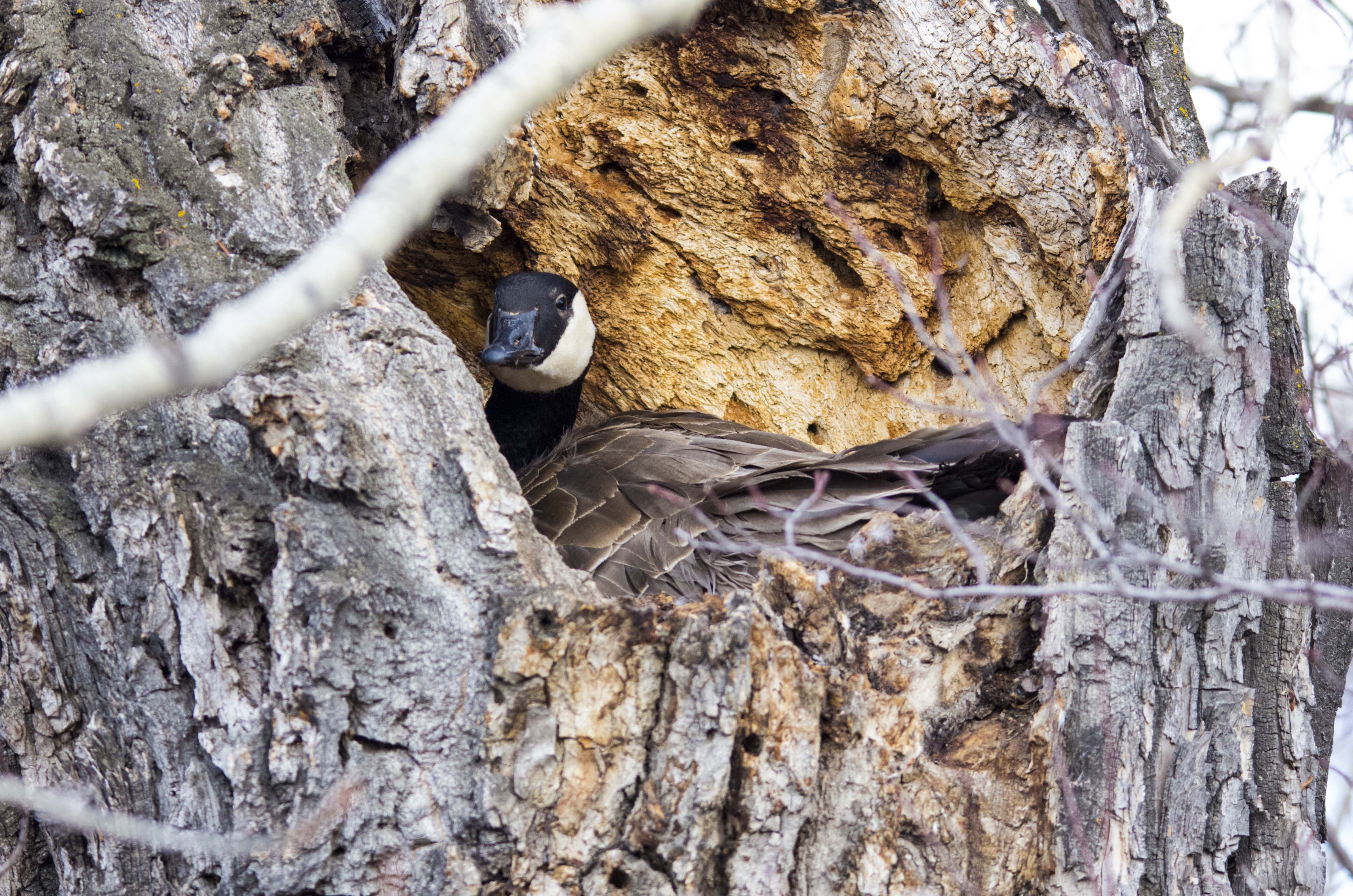Rob English took these amazing shots of a Great Blue Heron in Fish Creek Park in mid-April.
Birding Locations: Alberta Children’s Hospital Pond
Posted by Bob Lefebvre
I thought I’d do a series of posts on some of the smaller ponds and birding locations in Calgary that many birders may not have visited. I’ll start with a fairly new pond that was constructed just south of the new Alberta Children’s Hospital.
This location, which is not far from the Bow River, lies just west of the University Heights neighbourhood in NW Calgary, and alongside West Campus Blvd. There are several paved paths into the area. To access the area by car, park on Utah Drive and take the short path to the pond.
The main feature here is the large body of water which is almost bisected by a long thin peninsula. The pond attracts waterfowl, a few shorebirds, Red-winged Blackbirds, and others. There is also a large open field north of the pond which attracts hawks. A pair of Swainson’s Hawks has nested just SE of the pond for the last few years. I have seen up to six Swainson’s Hawks over the field at once. A Rough-legged Hawk staked out its territory here last winter.
Looking across the pond from the northeast corner.
A closer look from the northeast, with Edworthy Park across the river in the backgound.
Three views from the south side, looking towards the Children’s Hospital:
A few closer looks which feature some of the birds found here:
Mallards and Canada Geese nest here.
Red-winged Blackbirds nest in the cat-tails around the pond.
A Mallard, Northern Shoveler, two American Wigeons, and four Cinnamon Teal on the peninsula.
This location will only get better as the trees and shrubs around the pond mature. So if you live nearby, or are passing through this area, it is worth a visit.
For more information on where to go birding, see the Nature Calgary Birding Locations Page. It has an excellent and comprehensive guide to many locations in the city and the surrounding region.
Wednesday Wings: Ospreys
Ospreys have returned and have started to nest on platforms across the city. When this Osprey arrived at the platform at MacLeod Trail and Highway 22x on April 24, he first had to evict a pair of Canada Geese who had thoughts of nesting there too. Photos by Joe Harley.
Joe also got some great shots of an Osprey with a fish south of Carburn Park. This is one of the pair that is nesting at the Lafarge platform along MacLeod Trail just south of Southland Park.
Spring Migrants and a warm welcome at Carburn Park
Posted by Dan Arndt
Finally we had a warmer day, and while there was a little wind and the light wasn’t perfect, there were certainly a few moments where everything made it all worth while, even the last few weeks of dreary, snowy misery.
We started, and finished, with the show-stealers of the day, and it made it difficult to really have anything match the incredible sight.
While Dad was protecting the young, the mother and babies were well guarded and seemed to be completely unfazed by the presence of 14 people checking out the area.
In the first pond at Carburn Park, we saw quite a bit of evidence of beaver activity, and we did manage to spot a pair of them swimming about, with this one getting close enough for me to photograph.
While we headed south in the earliest start of the season so far, we got lucky with a few birds we hadn’t seen before, like the Song Sparrow and Savannah Sparrow, but neither were in any position for me to get photos. Swarmed by low flybys of literally hundreds of Tree Swallows at a time, our eyes were on the sky much of the time, allowing me to spot this distant Rough-legged Hawk circling above the parking lot, most likely rising on thermals to continue his northward migration.
As we neared the parking lot again, and scanned along the river to see what we could see, we were gifted with this beautiful flyby of a male American White Pelican. Awesome.
We headed up along the bank of the river, and while we saw a good number of Franklin’s, Ring-billed, and California Gulls, and even bigger numbers of Tree Swallows, but due to the number of boats on the river, the photo opportunities were slim. That all changed once we turned back onto main pathway and reached the second pond. We got really good looks at Red-necked Grebes and a single Common Loon, and I knew that if they stuck around, I’d be back later on with the Swarovski ATX 85 to take some much closer shots.
Our next good views were on the river, one of which was, I think, one of the most surprising of the day. A lone Yellow-headed Blackbird was flocking with a group of European Starlings. For a bird that is almost always seen in cat-tail wetlands, seeing it foraging on the bank of the river was really odd!
Another of the awe-inspiring sights was the Tree Swallows banking, diving, and feeding over the Bow River, and I think we had just as much fun watching them.
We headed back, prepared to call it a day, and had our best views of a pair of Osprey in the distance.
After the rest of the group left, I returned to the bank of the second pond to see what I could see through the scope, and get some better photos of the Red-necked Grebes, Common Loon, and I ended up getting some nice ones of the Great Horned Owls as well!
Thanks for reading!
Next week, we’re off to South Glenmore Park, to see what we can see on the Glenmore Reservoir, and maybe luck out with some early arriving warblers and a few more sparrows.
Good birding!
Sunday Showcase: Swans
Furry Friday: White-tailed Deer Buck
Paul Turbitt first saw this magnificent ten-point White-tailed Deer buck in Fish Creek Provincial Park last December. He photographed it, and its young companion, in late December and early January.
For more of Paul’s photos, see his blog, Turbo’s Track and Tour.
Zoo Ospreys are Back – Watch Live
The Ospreys are back on the nesting platform at the Calgary Zoo. So far there are just a few sticks on the platform, so if you tune in to the live Enmax web cam, over the next few weeks you can watch them build the nest, lay eggs, and raise their young until they fledge.
Below is a link to the web cam. We will also have a link on the right sidebar of our Home Page throughout the nesting season. Check out the U of C Peregrine Falcon nest cam too!
Alberta Headwaters Petition
In about two months the Alberta government will be releasing its draft of the South Saskatchewan Regional Plan. This will have a huge impact on the future of the wildlife, plants, and water resources of the headwaters. Naturalist, writer, and former superintendent of Banff National Park Kevin Van Tighem has started an online petition asking the government to “Treat our Alberta Headwaters like the treasures they are.”
Kevin says, “Those responsible for finalizing the South Saskatchewan Regional Plan are under a lot of pressure to protect the status quo for industrial-scale logging in the headwaters, and are being lobbied very aggressively by off-road vehicle users who want no restrictions on their activities. I believe we have a good Minister; I also believe she’s under a lot of pressure.”
Kevin adds, “Most of us likely remember – I certainly do – when the foothills and Front Ranges were like paradise — before they were brought down to their current state by multiple-abuse. The South Saskatchewan Regional Plan will have quasi-regulatory status and is meant to be a strategic roadmap to our next fifty years. It’s really important that those who believe we can do better for our headwaters – the forests, creeks, meadows, trout, grizzlies and wild places that yield all the water that comes down the rivers to where we all live – make themselves heard.”
Here is the text of the petition:
A century of clear cut logging, oil and gas development and out-of-control off-road vehicle abuse has left the headwaters of the South Saskatchewan River fragmented and scarred. Natural river flows are 12% lower than in the mid twentieth century. Climate change will only make things worse.
Alberta is about to release a South Saskatchewan regional land use plan that was prepared with wide citizen consultation. But special interest groups with a stake in business-as-usual want to ensure it contains no limits on off-road abuse, increases clear cut logging, and promotes more development.
Those who care about healthy landscapes, clean rivers and future water security need a chance to inform the government that they support a plan that keeps the mountains and foothills green and healthy by establishing new parks, restricting off-road vehicles to official trails, replacing clear cutting with restoration logging, and repairing landscapes damaged by past industrial and motorized abuse.
Healthy intact headwaters don’t just produce more and better water – they yield better fishing and hunting, more secure and productive habitat for elk, grizzlies and native trout, and the aesthetic and ecological qualities that yield the finest of recreational environments.
If you would like to support this cause and sign this petition, go to the petition website, and share this with friends and family.
Wednesday Wings: Merlin with Starling
Winter’s lingering grasp in Inglewood Bird Sanctuary
Posted by Dan Arndt
Another cold, snowy, and dull day here in Calgary. The Sunday curse has struck again, leaving us with a bitterly cold north wind, and the least bird activity we’ve seen all spring. While we did get some decent new birds for the year, and a couple of great surprises while walking in Inglewood Bird Sanctuary on Sunday, our participant numbers were still low, and so were the species we found.
While the wind was blowing and the skies were grey, our first new species of the day was the Eurasian Collared-Dove. I don’t know that I’ve ever actually seen one of these birds inside the bird sanctuary, or so it was a nice find!
As we approached the river, we were on the lookout for the Mountain Bluebirds that I had seen earlier in the week, but instead we happened across a group of American Pipits on the river bank, with a brief stop out on the nearest gravel bar before heading up stream.
As we watched the pipits and scanned the far bank, we were lucky enough to spot a Franklin’s Gull fly in and land among a few other gulls, but given how far it was, getting a clear shot was quite the challenge.
We soon came upon a lone Coyote raiding a Canada Goose nest, and saw him stealing away an egg. Sad for the geese, but there were many pairs successfully nesting in the sanctuary, and their numbers really are ever in question. This one was seen nesting in the same cavity that I’ve seen her in for the last three years at least.
Our last surprise of the day was a second small flock of Bohemian Waxwings going down to the river for a drink before flying off. They stopped briefly for us before flying off, hopefully symbolizing the end of the winter weather and bringing on spring in full force!
Good birding!























